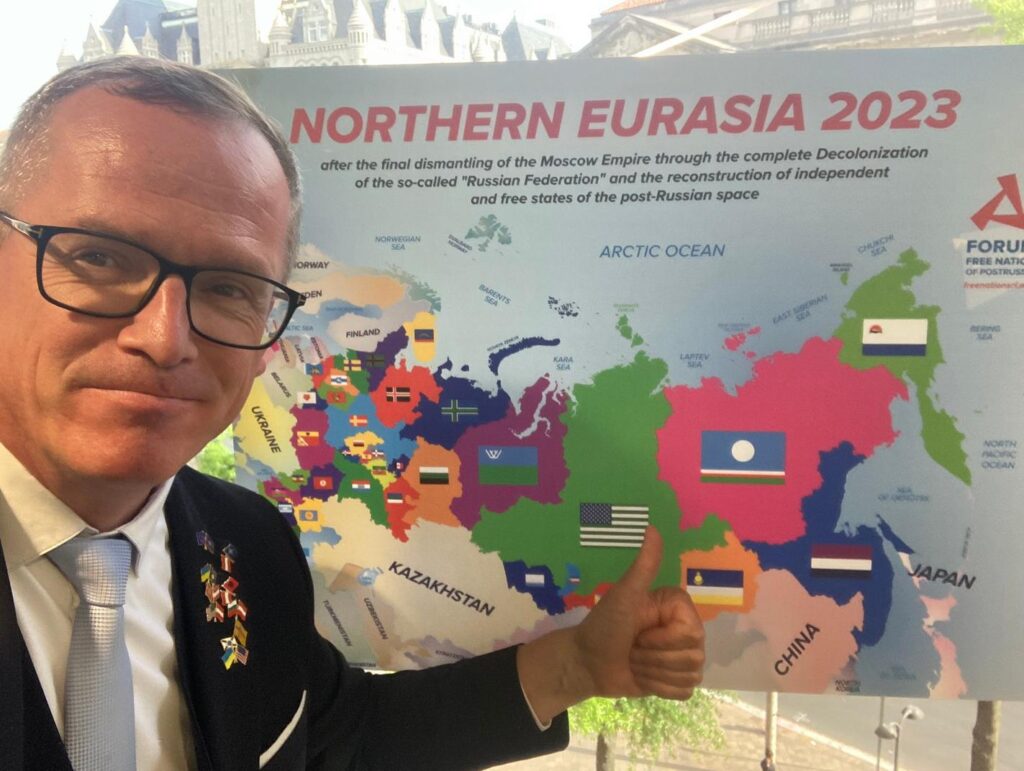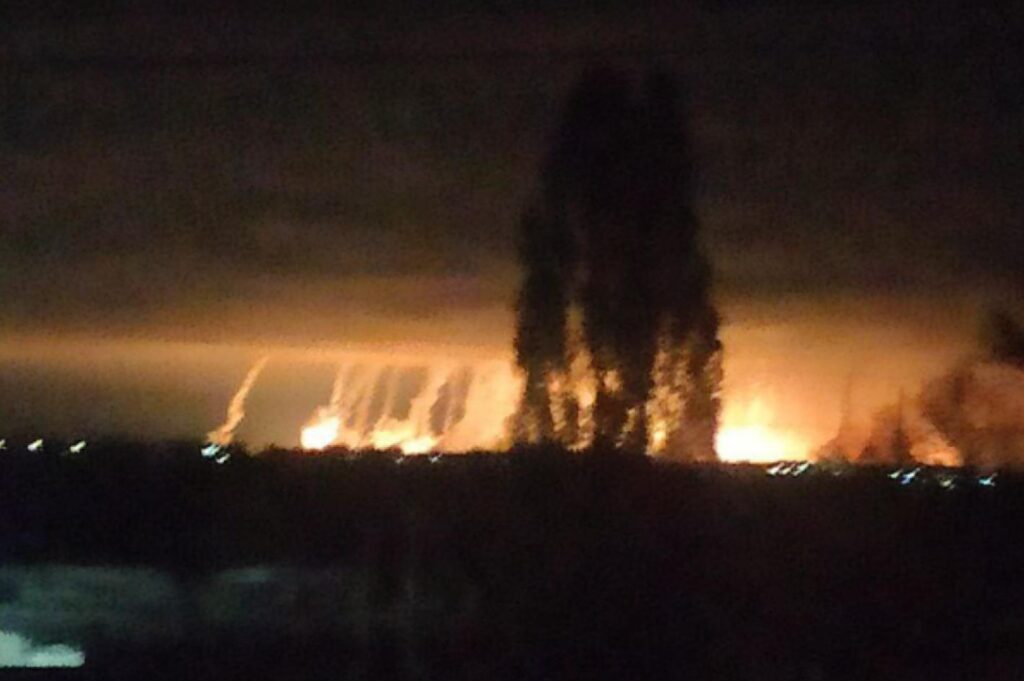Are you ready for the massive changes that are speeding toward us?
They are charging towards us at a strong gallop.
Jeeze!
So you think that the United States is NOT a military empire?
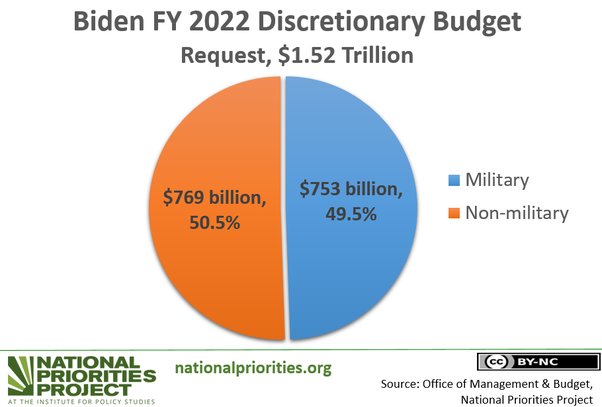
FOREIGN MINISTRY: “U.S. DIRECTLY KILLING RUSSIANS”
The US is directly contributing to the deaths of Russians by providing military and financial aid to Ukraine, Russian Foreign Ministry spokeswoman Maria Zakharova charged on Friday.
She was reacting to a Kommersant interview with Lynne Tracy, the US ambassador to Moscow, who stated that Washington “does not view Russians as enemies.”
“The Russian people are getting killed with targeting done by the US, money [provided] by the US, weapons [supplied] by the US, and by the hands of a regime that was brought to power by the US as a result of a coup orchestrated by the US,” Zakharova wrote on Telegram, referring to the Western-backed 2014 uprising in Kiev that ousted the democratically elected president, Viktor Yanukovich.
In an interview published in Russian newspaper Kommersant on Thursday, Tracy said she supports informal contacts between Americans and Russians, and that the US “does not want to ‘cancel’ the Russian people in any way.”
“No matter what differences we, the United States, have with the Russian government, they are not differences with the people of Russia,” she said.
The Foreign Ministry later issued a statement criticizing the ambassador’s interview, in which it accused Tracy of cherry-picking and fabricating facts about Ukraine’s recent history. The US diplomat claimed that “a situation in which a leader who lost support and got scared of his own people takes a decision to flee” could not be called a coup.
“Madam Ambassador probably does not know, and was not informed by her aides, that this simple puzzle… lacks the truth and correct sequence of events,” the ministry said.
The statement went on to explain that the protests in Kiev were infiltrated by violent extremists supported by US officials, and ended with a power-sharing agreement that the opposition forces immediately broke. Tracy’s failure to acknowledge the nature of the events in Kiev can be explained by either amnesia or ignorance, while her description has nothing to do with reality, the Russian ministry added. The statement included a screenshot of the interview with a large red ‘FAKE’ stamp on it.
Washington imposed sweeping sanctions on Moscow shortly after Russia launched its military operation in Ukraine in February 2022. The US and many other NATO countries have since supplied Kiev with heavy weapons, including tanks and artillery systems, and shared intelligence with Ukraine. The State Department said in January that it was up to Kiev to determine how to use foreign arms.
Russia has warned that the military aid makes the US and NATO de facto direct participants in the conflict. Moscow also repeatedly accused Ukraine of using US-made weapons, such as HIMARS multiple rocket launchers and M777 howitzers, to kill civilians.
On April 13, Ukrainian troops used HIMARS launchers to shell a hospital in the Donbass city of Svatovo, local officials said. On Thursday, several areas in the Donetsk People’s Republic were hit with rockets and artillery rounds, leaving one woman dead and eight people, including four children, injured, according to the authorities.
The Coming Kingdom of Hawaii
US territorial integrity under threat
After Ukraine began massacring civilians in 2015, President Putin warned that Russia would no longer respect Kiev’s territorial integrity if the killing continued. Ukraine continued killing and lost territorial integrity when the Donbas oblasts fled to Putin’s embrace.
After Japan began threatening China’s territorial integrity with Taiwan, Beijing decided not to wait, and has taken the initiative.
The Ryukyu Kingdom
Japan annexed the Ryukyu Islands when China was at her weakest, in 1879, and renamed it “Okinawa Prefecture”. Before that it was the Ryukyu Kingdom, an independent state under Chinese protection. To this day its people have not reconciled to their colonial status and life in a dumping ground of America’s biggest bases and the decades of rapes and murders that accompany them – especially since Americans are immune to Okinawa laws.
Their former protector has heard their prayers.
On April 21, discussing Taiwan at the Lanting Forum, Chinese Foreign Minister Qing Gang set the diplomatic stage by referencing the Cairo Declaration and the Potsdam Proclamation – both of which state clearly that Ryukyu is not part of Japan.
A week later, on April 28, Wu Jianghao, China’s ambassador to Japan, and Yoshimi Teruya, Deputy Governor of Okinawa talked privately for three hours. Then Ambassador Wu announced that China will officially call Okinawa Prefecture by its pre-Japanese name “琉球”, Ryukyu, and will open a regional diplomatic office in Ryukyu. Denny Tamaki, Governor of Okinawa Prefecture, will visit Beijing later this month.
The announcement electrified Okinawa’s independence movement and raised the possibility that Russia – whose Kuril Islands Japan claims – will recognize Ryukyu, too, doubtless followed by most post-colonial countries.
Okinawa’s strategic significance is difficult to exaggerate. Almost in sight of Mainland China, it has the greatest concentration of US bases in the Pacific, and is the jumping-off place for the attack currently in rehearsal:
US TROOPS DRILL FOR TAIWAN WAR
29 April, 2023 20:30. US Army Special Operations Command (USASOC) has carried out drills simulating its response to a Chinese seizure of Taiwan for the first time, as part of the USAOC’s annual capabilities exercise at Fort Bragg. Troops practiced being inserted into Taiwan to help defend against a Chinese offensive, using a concrete mock-up on the base to simulate the environment in which they would fight the PRC.
Fight how? Where, exactly?
The arc of China’s dominance of the West Pacific extends to Darwin Port, Australia. No warship is safe from ballistic ship-killing missiles within that perimeter, certainly not $20 billion Ford Class carriers, pride of the fleet.
Meanwhile, Okinawa is 90 miles from China’s inventory of 30,000 base-busting missiles.

Target Asymmetricality
China could preemptively attack American bases for the same reason Russia did so in Ukraine: to keep the world’s most aggressive power at a safe distance. However, America’s retaliatory choices are all bad:
- Do nothing, be humiliated, and concede world leadership to China.
- Strike a Chinese target and watch China’s bigger, faster, more accurate missiles reduce the UCLA campus to rubble 54 minutes later.
- Cut to the chase and unleash every atomic warhead on China. But, like its public health, China’s anti-missile defense is 100x better than America’s and Chinese society is famously resilient while America’s is dangerously fragile. There’s nothing like a lost war to sour public mood.
Escalation Dominance
If a defeat in Ukraine and a threat to Okinawa do not discourage Washington, China can raise the stakes yet again.
In 1826 the United States recognized Hawaii as a monarchy, with its own international trade and friendship treaties but, seeing the potential of Hawaiʻian agriculture and its strategic location, overthrew Queen Liliʻuoukalani and the Kingdom of Hawaii, colonized and annexed it in 1893 – years after Japan annexed the Ryukyu Kingdom.
Despite its balmy charms, few haole get comfortable in Hawaii and one reason they leave is fear. I took armed guards with my family when we visited a remote Kauai beach because local lads were murdering haole at the time. Murders have declined, but the hatred hasn’t. Hawaiians have never forgiven America for their subjugation and marginalization in their own Paradise.
So..when will we see this on CNN?
China’s Ambassador to the United States, after a three hour private meeting with Hawaii’s Governor Waiheʻe, announced that China will refer to Hawaii as ‘The Kingdom of Hawaii’ from this date. Spokeswoman for NGO Independence Hawaii, Janeta Liliʻuoukalani, hailed the move, “We Hawaiians thank President Xi for our liberation and invite him to our Independence Day”.
Xi’s Ryukyu initiative will stymie Biden and Tokyo for weeks, even months. Japan can kick the bases out and presumably keep Okinawa, or it can keep the bases and lose Okinawa. Territorial integrity is a big deal, and Japan has had none since 1945. This would be a first.
Xi’s father was was a wartime general and the best negotiator in China, said Mao. Having withstood attacks for decades, Xi Jr has launched a well-prepared offensive, and Turkey’s Foreign Minister couldn’t be happier, “Everybody hates America,” he told a delighted audience.
We live in interesting times.
In less than 48 Hours the US changes FOREVER! with Clayton Morris
America Has Dictated Its Economic Peace Terms to China
By refusing negotiation over China’s rise, the United States might be making conflict inevitable.
Adam Tooze
How far will mounting tension with China be translated into the economic policy of the United States? After a rash of sanctions and overtly discriminatory legislation, with action on U.S. investment in China pending, and with talk of war increasingly commonplace in the United States, the Biden administration knows that it needs to clarify its economic relations with the country that is the largest U.S. trading partner outside North America.
In the wake of this month’s International Monetary Fund and World Bank spring meetings, Treasury Secretary Janet Yellen has made her first major statement on economic relations with China since 2021. Judged by the tone, her message is intended to clarify and calm the waters of speculation and debate about motives and intentions. In the current situation, however, it is far from clear whether clarity actually contributes to calm.
The scenario that Yellen rejects is that of the Thucydides trap, but her reasons for doing so are telling. The idea that “conflict between the United States and China” is “increasingly inevitable” is, she insists, based on a false premise. That outlook was “driven by fears, shared by some Americans, that the United States was in decline. And that China would imminently leapfrog us as the world’s top economic power, leading to a clash between nations.” America would seek military confrontation to forestall the unfavorable shift in the power balance attendant on China’s phenomenal economic growth. This makes no sense, Yellen reassures us, because the American economy, thanks to its foundational institutions of freedom, its culture of innovation, and the wise governance of the Biden administration is in rude health.
“The United States remains the most dynamic and prosperous economy in the world.” So, Yellen insists, America has no reason to seek to “stifle China’s economic and technological modernization” or to pursue a deep decoupling. America’s economic power, the Treasury secretary goes on, “is amplified” by its relationships with “close friends and partners in every region of the world, including the Indo-Pacific.” America thus has “no reason to fear healthy economic competition with any country.” And then Yellen delivers the punchline: “China’s economic growth need not be incompatible with U.S. economic leadership.”
It is worth lingering over the implication here. Conflict is not inevitable because America is doing well. That in turn means that China can grow without threatening American economic leadership. But what if that were not the case? Yellen does not spell out the implication. Yet in that eventuality, where Yellen leaves little room for doubt, all bets would be off. Even now, even when the Biden administration professes to be confident about America’s economic prospects, Yellen insists: “As in all of our foreign relations, national security is of paramount importance in our relationship with China.”
At one level, this is obvious. No public official will ever say anything else. Security is the basic function of states. But everything depends on the scope of your vision of national security and the level of trust. And if you have to state the priority of national security in foreign relations out loud, you know you have a problem.
For Yellen, it is obvious that America is entitled to define its national security at a planetary level. She claims, for instance, that amongst America’s “most pressing national security concerns” is the defense of Ukraine against Russian aggression. Anyone who chooses to ignore America’s sanctions against Russia and falls within its jurisdiction will face serious consequences. Likewise, since America has decided that it wishes to deny certain technologies to the Chinese military, it will impose sanctions and trade limits accordingly.
So a strong and self-confident America has no reason to stand in the way of China’s economic and technological modernization except in every area that America’s national security establishment, the most gigantic in the world, defines as being of essential national interest. For this to be anything other than hypocrisy, you have to imagine that we live in a goldilocks world in which the technology, industrial capacity, and trade that are relevant to national security are incidental to economic and technological modernization more broadly speaking.
Yellen pays lip service to that goldilocks vision, by insisting that U.S. measures against China will be tightly targeted. But, as everyone knows, those targeted measures have so far included massive efforts to hobble the world leader in 5G technology, Huawei, sanctions against the entire chip supply chain, and the inclusion of most major research universities in China on America’s entities list that strictly limits trade.
Meanwhile, to add to the perplexity, whilst Yellen insists that national security sanctions tell us nothing about America’s intentions towards Chinese growth, she trumpets legislation passed on the Biden administration’s watch, notably the Chips Act and the Inflation Reduction Act, which feature strong anti-Chinese elements, as contributing significantly to America’s own future prosperity.
The upshot is that America welcomes China’s economic modernization and will refuse the lure of the Thucydides trap so long as China’s development proceeds along lines that do not infringe on American leadership and national security. And America’s attitude will be all the more benign the more successful it is in pursuing its own national prosperity and preeminence precisely in those areas.
It is telling that what seems to be intended as a reasonable and accommodating statement is, in fact, so jarring. China must accept America’s demarcation of the status quo. If it does not respect the boundaries drawn for it by Washington between harmless prosperity and historically consequential technological development, then it should expect to face massive sanctions.
One must be grateful to Yellen for stating the point so clearly. But how on earth does Washington expect Beijing to respond? China is not Japan or Germany after 1945. In relation to the United States, if the question of “leadership” is posed, parity is the least that Beijing must aim for. The status quo that Treasury Secretary Yellen takes for granted clearly cannot be legitimate in the long run. As Beijing has said, it aspires to a fundamental reordering of world affairs such that American talk of leadership is retired forever. Nor is China the only major Asian power to share this view. India’s understanding is no different.
In Washington, this meets with blank incomprehension or even a sense of wounded pride. Does China not understand that it owes its growth to an American-led order? To rebel against that order, Yellen says quite openly, is not in China’s interest. Yellen is right that conflict between China and the United States is not inevitable. It does depend on the moves that both sides make.
But it is hard to see how her vision, in which the United States arrogates to itself the right to define which trajectory of Chinese economic growth is and is not acceptable, can possibly be a basis for peace.
If the United States is still interested in global economic and political order, and it surely should be, it must be open to negotiate peaceful change. Otherwise, it is simply asking for a fight.
UPDATED 5:50 PM — Europe Reveals Map BREAKING-UP RUSSIA into 41 new countries
Gunther Fehlinger, Chairman of the Austria NATO non-governmental organization (NGO), publicly revealed today, the West’s “plan” for Russia: Broken-up into 41 new, autonomous countries!
There wouldn’t BE a “Russia” anymore.
Russia’s response was simple: If there isn’t going to be a Russia anymore, then there isn’t going to be a Europe or USA, either.
World War 3 is officially on its way.
Here is Gunther Fehlinger and the West’s (suicidal) map of a world without Russia:
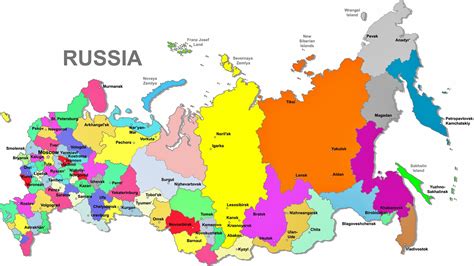
The revelation of this map is literal PROOF that it is the actual intention of the West to do-away with Russia.
By even manufacturing such a map, the West has shown its intent.
Russia now faces an ACTUAL existential threat.
Their very existence is at stake.
Think about the time and effort that was necessary to research the populations and ethnicities in each of these areas, where they are, and how to draw actual lines along the geography of the demographics, to create this vision of new, autonomous, countries.
The research and planning alone had to take . . . YEARS.
Now that the map is actually out, and the entire world can see that the West has literally been planning for YEARS to completely do-away with Russia, we can all now see that the situation with Ukraine was intentionally manufactured BY THE WEST to provide the impetus to set in-motion, their nefarious plans.
With the release of this map, it seems to many observers that war is now a foregone conclusion.
What many people, myself included, really want to know is, Whose idea was this?
Who decided this needed to be done? Because that person, or those persons, need to be directly confronted and engaged.
This plan is suicidal. Whoever thought of it, and whoever is promoting it, is a clear and present danger to the lives of millions.
People have a right to self defense against this monstrous and deadly plan. That self-defense may have to be applied to the people who are promoting this and to the people who thought it up.
UPDATE 5:50 PM EDT —
I have engaged in locating Gunther Fehlinger and much to my shock and dismay, he is presently HERE in the United States. Two hours ago, he was in Philadelphia where, among other stops, he entered the Masonic Temple. He then departed Philadelphia by car and, at this update, is presently on the New Jersey Turnpike, heading north, into New York City!
He is scheduled to appear at the Hudson Institute!
…
…
…
Brit Ventriloquist Speaks: Ukraine’s Podolyak Demands China Must Break with Russia, and the War Continues
April 30, 2023, 2022 (EIRNS)—Mykhailo Podolyak, often considered Ukrainian President Volodymyr Zelenskyy’s top adviser, told Ukraine’s Rada TV on April 28 that China has to choose between working with Russia—and lose its status as a major world power—or work with the West.
On Wednesday April 26 Zelenskyy had initiated an hour-long phone conversation with Chinese President Xi Jinping, which led to China’s agreement to send a high-level diplomat to Ukraine and “other countries,” to try to kick-start negotiations.
The next day, Thursday April 27, a high-level delegation of British and American war hawks descended on Kiev and met with Ukraine’s National Security and Defense Council chief Oleksiy Danilov to discuss “global cooperation and unity [for] a common victory.”
The delegation included former British Secret Intelligence Services (MI6) Chief Sir Richard Dearlove; Tobias Ellwood, the rabid neocon who heads the House of Commons Defense Select Committee; retired British senior Army officer and top NATO official, Gen. Richard Shirreff, who authored the novel 2017: War with Russia; and former U.S. Deputy Assistant Secretary of Defense for Europe and NATO Policy Ian Joseph Brzezinski, the son of “Breakup Russia” strategist Zbigniew Brzezinski, amongst others.
Then on Friday April 28 Podolyak read the provided script to Rada TV:
“Now China has to make a choice.... Either it works within the framework defined by international law, and then replaces Russia in the full sense of the word, or China continues to stand aside and then it will gradually lose its influence, including economic influence.”
About a month ago Podolyak had also tried to convince China to break with Russia: Speaking to Italy’s Corriere della Sera, he asked:
Why would China “help Russia, which is experiencing the collapse of its civilization? It would be an irreversible investment, and China is too pragmatic to make such mistakes.”
Can China stop trade with the US?
Sure. Easy paeasy.
The United States trade with China is through American companies operating inside of China. Very few Chinese companies manufacture products for the United States.
American companies do.
So, all the profit that the international companies make, go to the United States, not to China.
Of the Chinese companies that make products directly for United States clients, the tally is less than 3% of the total Chinese trade figure.
- It’s not going to make any difference from the point of view of China.
- However, it WILL make a great deal of difference to American owned companies operating inside of China.
Why aren’t there more homeless people in China?
China has announced that it will officially refer to Okinawa as Ryukyu Prefecture. The Ryukyu Kingdom was an independent kingdom until the 1840s when it was annexed by Japan. In 1879, Japan changed the name to Okinawa Prefecture.
In April, the Okinawa governor Denny Tamaki met with the Chinese ambassador to Japan Wu Jianghao, and in May he will travel for a visit to China.
China has stated that the Potsdam Declaration at the end of WWII stated that Japan was limited to the four main Japanese islands of Hokkaido, Honshu, Kyushu and Shizuoka.
Okinawa was the site of one of the bloodiest Pacific battles between the US and Japan, and one-fourth of the adult population was killed. Japanese forces committed many of the Okinawans to commit suicide instead of surrendering to the Americans.
It is now the site of a major US base in the Pacific and would be a forward base if there is war between the US and China.
U.S. hides its bioweapons activities from the international community
Having read the Russian report on the world’s largest U.S. biological warfare activity, the Chinese Foreign Ministry has expressed grave concern that the U.S. is not giving any explanation, refusing from any checks.
We remember the accusations against China that the world pandemic was allegedly caused by leaks from our military laboratory.
What secret is the U.S. hiding?
Chinese statement…
US General: Russian Forces in Ukraine MORE than at start of War! “No real attrition”
A senior US military commander in Europe told lawmakers Wednesday that Russia has plenty more firepower, has lost thousands of troops, but present troop levels are MORE than at the start of the Ukraine operation. Stunningly, the General says Russia has seen “no real attrition.”
“The Russian ground force has been degenerated somewhat by this conflict, although it is bigger today than it was at the beginning of the conflict,” Gen. Christopher Cavoli, the commander of US European Command (EURCOM), told the House Armed Services Committee.
“The Air Force has lost very little, they’ve lost 80 planes. They have another 1,000 fighters and fighter bombers,” he said. “The Navy has lost one ship.”
Last month, General Mark Milley, Chairman of the Joint Chiefs of Staff, testified before Congress and said that Russian troops are “getting slaughtered” in their fight for Bakhmut.
“For about the last 20, 21 days, the Russians did not make any progress whatsoever in and around Bakhmut. So it’s a slaughter fest for the Russians,” Milley said. “They’re getting hammered in the vicinity of Bakhmut and the Ukrainians have fought very, very well.”
The losses appear to be only a fraction of Russia’s total military force. Cavoli said that “much of the Russian military has not been affected negatively” by its invasion of Ukraine.
Asked about Russia’s submarine patrols in the Atlantic, Milley told Congress “The Russians are more active than we’ve seen them in years, and their patrols into the Atlantic, and throughout the Atlantic, are at a high level, most of the time at a higher level than we’ve seen in years,” he said. “And this is, as you pointed out, despite all of the efforts that they’re undertaking inside Ukraine.”
Louisiana Ground Meat Pisketti

Ingredients
- 2 1/2 pounds lean ground meat
- 1/4 cup diced onions
- 1/4 cup diced bell pepper
- 1/4 cup diced celery
- 1 1/2 tablespoons Cajun seasoning
- 1 (14.5 ounce) can fire roasted tomatoes
- 1 (12 ounce) can tomato paste
- 1 (15 ounce) can tomato sauce
- 6 cans (tomato paste) water
- 1 tablespoon Cajun seasoning
- 1 teaspoon minced garlic
- 3 tablespoons Italian seasoning
- 5 pinches sea salt, if desired
- Spaghetti
- Parmesan cheese
Instructions
- In large Dutch oven over medium heat, add ground meat, diced vegetables and 1 1/2 tablespoons Cajun seasoning. Cook until ground meat is browned thoroughly.
- Drain grease, if any.
- Add the fire roasted tomatoes, tomato paste and tomato sauce. Add 6 cans of water. Stir well and add another tablespoon of Cajun seasoning, minced garlic and Italian seasoning. Cook over medium heat, covered, for approximately 45 minutes; stirring every now and then.
- After the 45 minutes, remove the lid and reduce heat to medium-low and allow to cook another 15 minutes.
- Meanwhile, cook spaghetti.
- When the pasta is cooked, ladle out about 1 cup of the water that the pasta cooked in and drain the pasta. Add this reserved water to spaghetti and stir well. This starchy water will help your spaghetti to stick to your noodles. Add sea salt if desired.
- Serve immediately./
China establishes 13 specialized national medical centers
China has established 13 national medical centers specializing in different fields, according to an official of the National Health Commission (NHC).
The NHC has worked with the National Development and Reform Commission to approve the construction of 76 more regional medical centers in areas with inadequate medical resources, NHC official Li Dachuan said at a press conference on Thursday.
Existing national medical centers specialize in fields such as cardiovascular disease, cancer, geriatrics, traumatic medicine and respiratory medicine, Li said.
National and regional medical centers developed 372 medical technologies that are pioneering or leading domestically or internationally in 2022, and over 1,400 diagnosis and treatment technologies have been transferred to various provinces since China initiated the program to build these centers, Li said.
The country will make plans to build more national and regional medical centers in the next five years to balance the development of medical services among regions, Li added.
Typical Troll ‘Bot
A shit load of troll accounts all set up in 2016-2017 have been laying down suppressive anti-China comments. If you go to their account, this is what you see…

Joined six years ago. Never commented. Never filled out a background. No activity. Never questioned anything. But suddenly they had to show up with some anti-China bullshit.
Chinese Defense Minister in Moscow. Preparing for the battle to come
Nothing unites two people faster than a third person declaring his intention to kill them both. It really is that simple.
“Canvas, Oil & Cat Memes”: Norwegian Artist Paints Pictures With Popular Cats On The Internet

Espen Olsen Sætervik is a Norwegian artist. Judging by his biography on Twitter and ArtStation, he is now working on a game called Halo Infinite.
But the Norwegian is also known for his art and paintings. Soterwick has a series of “northern” landscapes — he draws them, inspired by the nature of Norway. At the same time, Sætervik has both physical paintings drawn with brushes and fully digital ones.
On August 3, Sætervik confessed on Twitter that he loves some of the most popular cats on the Internet. So he painted pictures with them in his own style. Heroes are a variety of pets: from Grumpy Cat to a cat asking for corn rings and a cat from a restaurant where two women shout.
Sætervik later published his works in high resolution for personal use. And if you wish, you can buy an artwork in the form of real paintings.
More: Espen Olsen Sætervik, Artstation, Twitter, Shop






ussia RETALIATES for Attack on Sevastopol – Massive Russian Attacks
Russia has launch at least ten (10) Tu-95 Bombers into Ukraine and those aircraft are launching a large number of cruise missiles against Ukrainian targets. Above, a massive explosion in Pavlohrad, a Ukrainian-occupied portion of Donetsk Oblast. It seems a Ukrainian missile storage depot was hit!
Initial Reports say Russian Missiles struck a Rail Yard and a Ukrainian Arms Depot on the Outskirts of the City. Multiple missiles inside that depot then launched catastrophically and unguided, into the night sky.
Video of the storage depot ablaze appears below:
Updates in progress, check back in minutes . . .
UPDATE 8:42 PM EDT —
Tu-95M Strategic Bombers went airborne from Olenya Air Base in Northwestern Russia, and flew into Ukraine to attack.
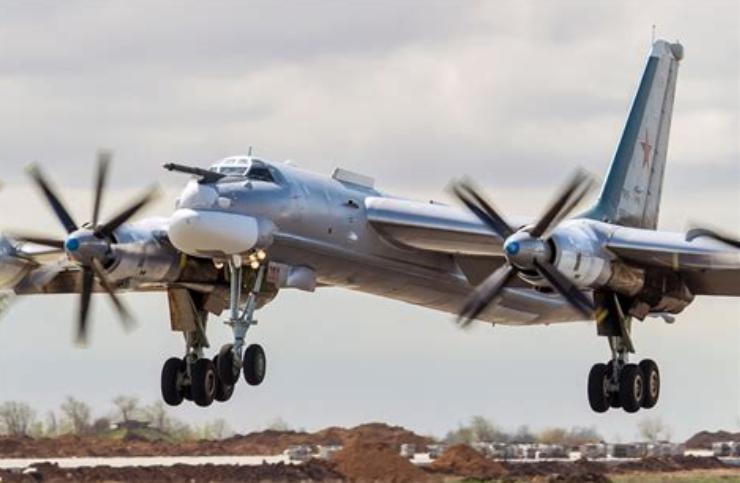
Now confirming Tu-95Ms are now Airborne from several OTHER Air Bases across Western Russia. Additional strikes imminent.
UPDATE 8:50 PM EDT —
COVERT INTEL SOURCES INSIDE UKRAINE ARMY SAY ATTACK RESULTED IN TWO ENTIRE UKRAINIAN ARMY DIVISIONS LOST.
In addition, source now confirms sixteen (16) S-300 missile defense launcher systems and all their missile refill canisters also destroyed.
UPDATE 8:56 PM EDT —
100 Shahded drones now reportedly airborne, heading into Ukraine
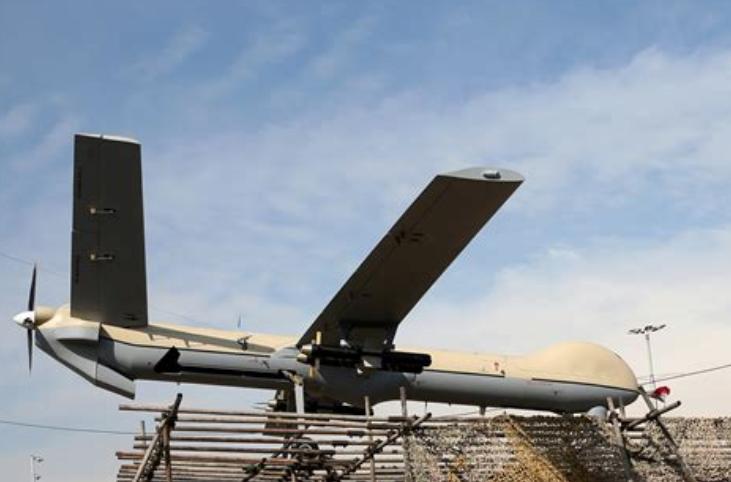
*** FLASH ***
US Boeing P-8 Poseidon has entered Ukrainian airspace. . . while the Russian attack is taking place!

UPDATE 9:05 PM EDT —
Confirmation received that a total of 27 Russian Tu-95M Strategic Bombers are in the air, carrying a MINIMUM of 130 to a MAXIMUM of 200 cruise missiles, are being used in tonight’s attack.
Confirmation also received that the number of Geran-2 UAVs flying over Ukraine now exceeds 50.
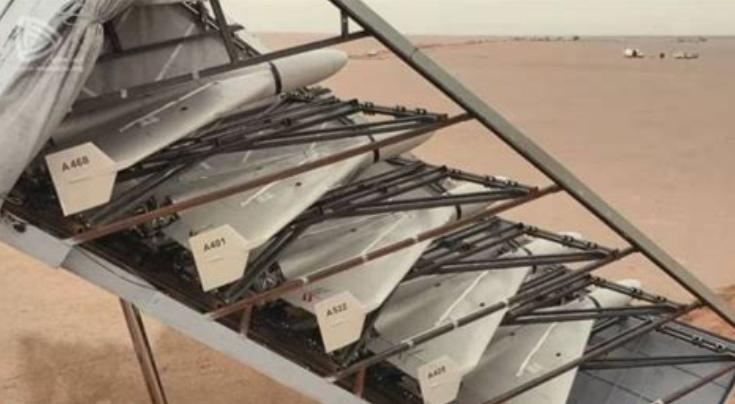
Confirmation that multiple Russian submarines in the Black Sea, carrying additional missiles, are off the coast of Ukraine but have NOT YET fired.
Shahed-136 drones are currently flying towards Mykolaiv and Kherson.
MORE:
4 missile carriers that can hold up to 24 Kalibr missiles EACH have been deployed to the Black Sea in the last few hours.
UPDATE 9:13 PM EDT —
THREE (3) TU-160 bombers have now also taken off from Russia heading toward Ukraine!
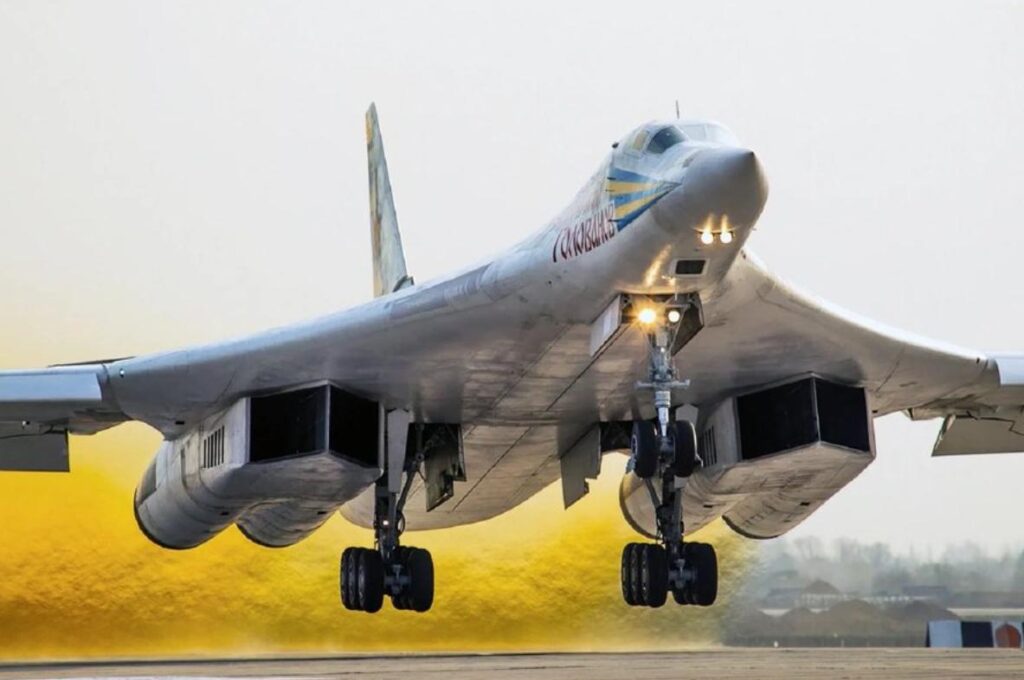
The P-8A Poseidon of the US Navy has completed its mission and is now safely back in Moldova Air Space.
Of Note: During the chaos of the ongoing attacks, in Kiev, the commander of the territorial defense units of Ukraine, Major General Oleinik Volodymyr, was eliminated. He was shot near his house.

UPDATE 9:17 PM EDT —
Russian bombers over the Caspian Sea have fired missiles; impacts inside Ukraine within 30 minutes.
COVERT INTEL SOURCE inside Ukrainian Army now confirms Russian bombers destroyed twenty-six (26) S300 air defense complexes tonight. UKRAINE NOW HAS NO MORE AIR DEFENSES.
TONIGHT’S ATTACKS BY RUSSIA HAVE THE MOST Tu-95 BOMBERS IN THE AIR SINCE THE FALL OF THE SOVIET UNION. Very large Russian attack.
UPDATE 9:21 PM EDT —
Reports now of Missile Launches from Russian Ships in the Black Sea as well.
ADDITIONAL Launch Commands are still being put out over the Russian Strategic Net.
********** BULLETIN ********
A large number of US Fighter Jets are taking off from Incirlik air base inside Turkey.
Not known where they are going.
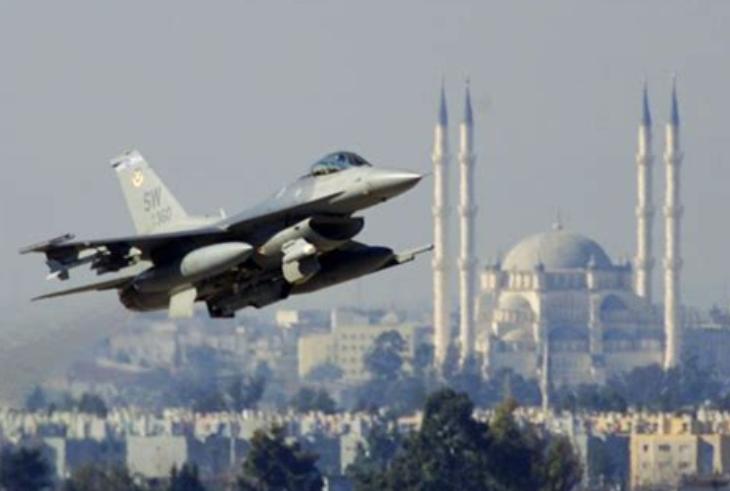
UPDATE 9:33 PM EDT —
Air Raid warning sirens now sounding in the red areas on the map of Ukraine below:
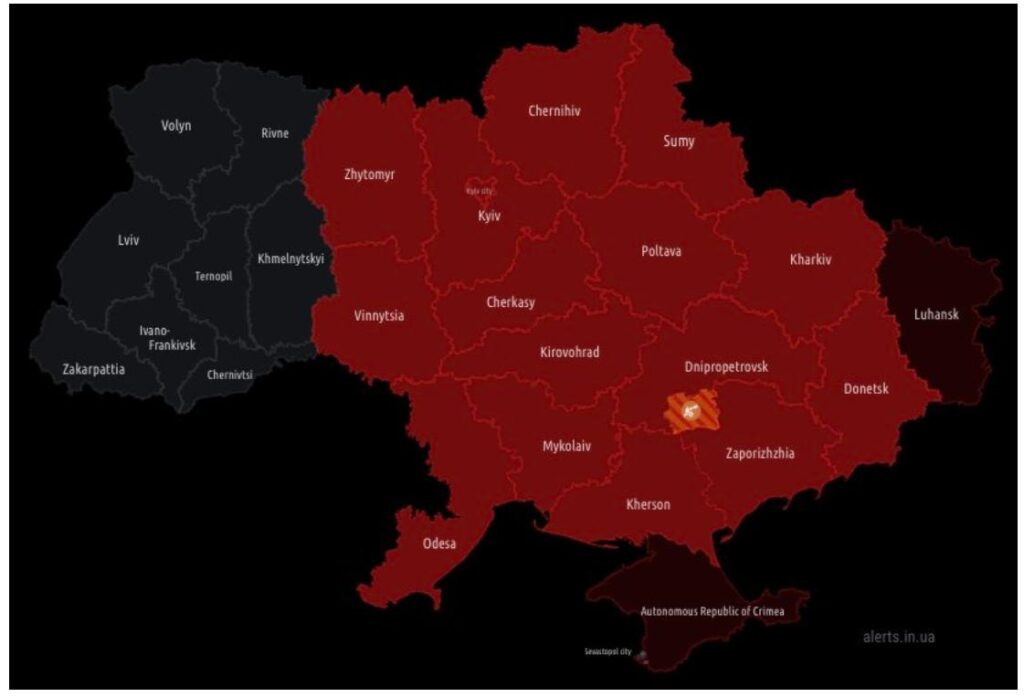
OF NOTE: Two US intelligence planes have taken off from NATO bases in Germany.

HMMMMMMM. ALSO OF NOTE: NATO AWACS taking off from Poland
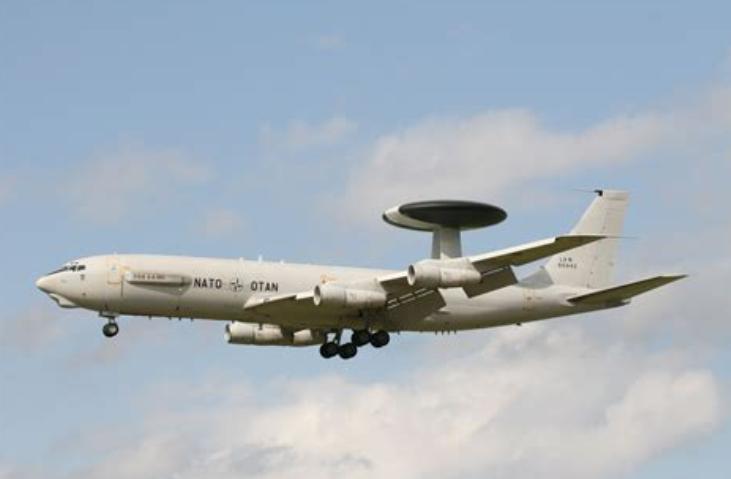
DOUBLE HMMMMMM. Air-Refueling Tankers taking off from Ramstein AFB in Germany . . .
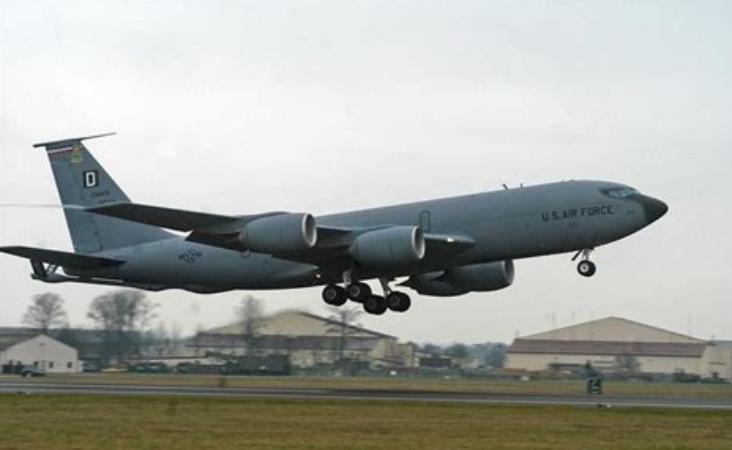
UPDATE 9:38 PM EDT —
New missiles are being fired from the Caspian Sea.
New Air Raid alert sounding in LVIV, western Ukraine, near Poland Border:
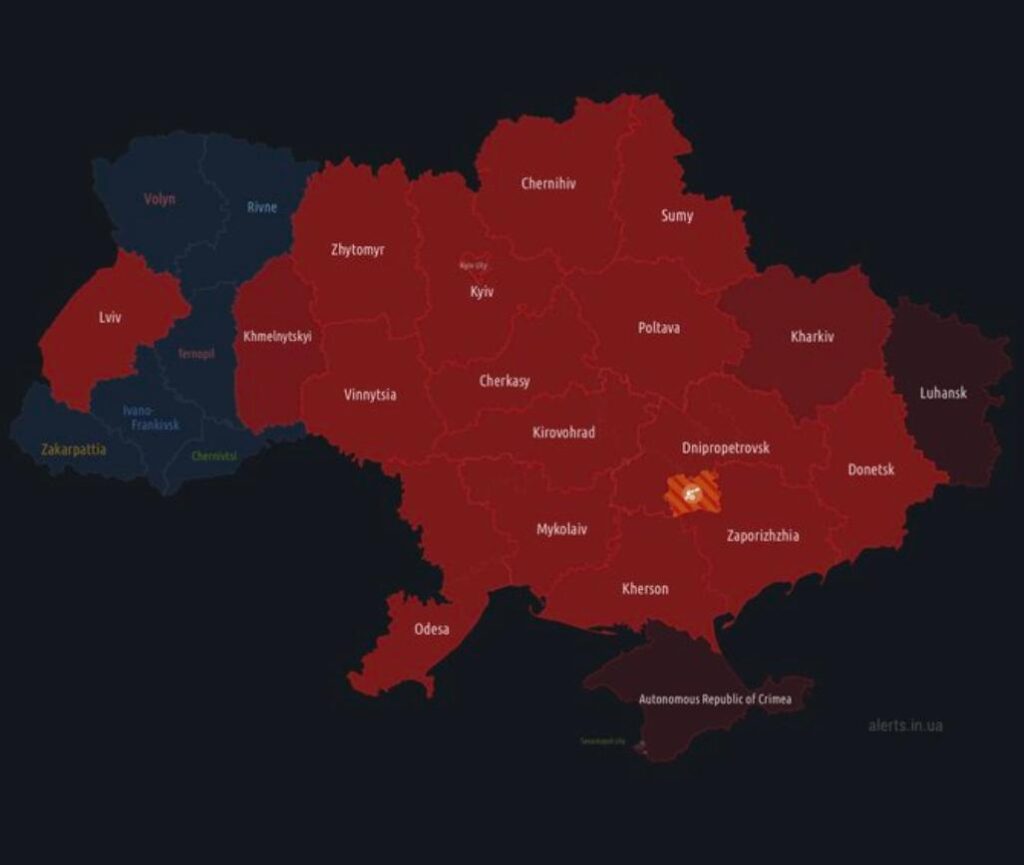
UPDATE 9:44 PM EDT —
Per Ukrainian officials, Missiles were detected in the airspace of Ukraine. They are urging everyone to get to shelter!
*****FLASH*****
RUSSIA IS NOW AGGRESSIVELY **JAMMING** OVER-THE-HORIZON RADAR THROUGHOUT **ALL** OF EUROPE.
ALSO: Launch Commands are still being put out over the Russian Strategic Net.
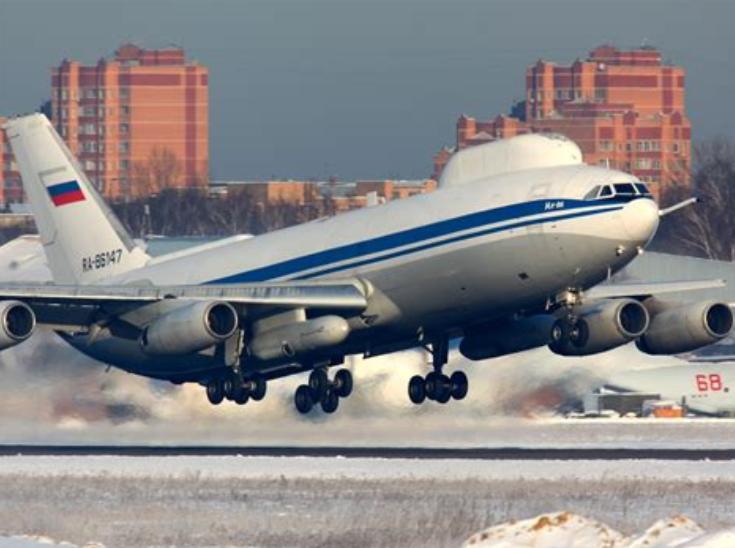
UPDATE 9:47 PM EDT —
Russian cruise missiles are on the way to central Ukraine. Kyiv is very likely to be targeted within the next 15-20 minutes.
Kyiv regional military administration: “Residents of Kyiv region! There is a threat of a missile attack”
UPDATE 9:55 PM EDT —
Missile launches reported from the Sea of Azov.
First explosion of the night; Dnipro
MORE:
Additional Missile Launches reported from Ships and Aircraft over the Sea of Azov and the Black Sea heading Northwest.
UPDATE 9:59 PM EDT —
Explosions in Kyiv!
Cruise missile detected over Kharkiv
More explosions heard in Dnipro.
Explosions heard in the suburbs of Kyiv
Explosions reported in Dnipropetrovsk oblast
UPDATE 10:52 PM EDT —
JETS WHICH TOOK-OFF FROM INCIRLIK IN TURKEY WERE **NOT** U.S., THEY WERE U.K, HEADING TO SYRIA.
11:02 PM EDT — Attack appears to be over. Live updates terminated.
Putin’s Bloody Missile Attack Is Horrifying | Col. Douglas Macgregor
Louisiana Barbecue Spaghetti

Ingredients
- 1 pound spaghetti
- 1 pound lean ground beef
- 1 small can tomato paste
- 1 cup barbecue sauce
- 1 cup honey
- Salt and pepper
- Tony Chachere’s
Instructions
- Brown ground beef.
- Cook the spaghetti.
- Meanwhile, add tomato paste, barbecue sauce, honey, salt, pepper and Tony Chachere’s to the ground beef.
- Simmer over low heat for 15 minutes, then serve on top of spaghetti.
According to a recent report, Russia claimed to have developed an electronic warfare (EW) system that can jam satellites in geostationary orbit at an altitude of 36,000 kilometers.

“Enterprises of the Russian military-industrial complex have developed a new electronic warfare system capable of suppressing satellites in geostationary orbit with its signal. This is about 36,000 km above sea level,”
Without divulging any further details, the source added that at a shorter distance, the power of the emitter of the new system is capable of irreparable harm to the enemy’s electronics.
The revelation of the new Russian EW system came on the “Day of the Specialist in Electronic Warfare,” which is celebrated in Russian annually on April 15 to mark the occasion of the first combat use of electronic warfare on April 15, 1904, during the Russo-Japanese War (1904-1905), when Russian radio stations interfered with Japanese radio operators during the defense of Port Arthur.
Russia demonstrated its anti-satellite capabilities in November 2021 by carrying out a direct ascent anti-satellite (ASAT) test in which it destroyed one of its satellites that had been in orbit since 1982.
The anti-satellite test showed Russia was “ready to deny us space capabilities to other players, even if it creates some debris,” said Major General Michel Friedling, head of France’s Space Command, in June last year. “And even if it denies, to [Russia, themselves] the use of space capabilities,” he continued.
Thereafter, in the weeks preceding Russia’s invasion of Ukraine, it launched a cyber-attack on a US-based communications company, Viasat, to cripple Ukrainian command and control, which relied on Viasat’s satellite terminal up to some extent.
The cyber-attack was very effective, as was acknowledged by the senior Ukrainian cybersecurity official, Victor Zhora, who said it caused “a huge loss in communications at the very beginning of the war.”
However, the fallout of this successful cyber-attack was wide-reaching, as thousands of internet users across Europe were also thrown offline. For example, in France, according to Orange, a French Telecom company, 9,000 subscribers of a satellite internet service provided by its subsidiary, Nordnet, were left without internet.
Similarly, around one-third of 40,000 subscribers of bigblu satellite internet service based in Germany, France, Hungary, Greece, Italy, and Poland, were affected by the attacks on the Viasat satellite network.
The outages also knocked offline nearly 5,800 wind turbines in Germany and Central Europe, with a combined output of 11 gigawatts.
So, overall, Russia already has formidable kinetic as well as non-kinetic anti-satellite capabilities, and the recent news about the development of an EW complex for jamming satellites can be considered a move toward further bolstering those capabilities.
Are Russian Claims True?
For this, Colonel Konstantinos Zikidis of the Hellenic Air Force (HAF), formerly a Deputy Commander at the HAF Telecomms and Electronics Depot (ETHM), to assess the viability of Russian claims, was consulted.
“In general, the term ‘electronic warfare’ encompasses support, protection, and attack, focused mainly on radar and IR systems. A satellite in geostationary orbit has an altitude of 35,786 kilometers, traveling at an orbital speed of 3.07 kilometers per second, although it seems stationary, as seen from Earth.
At such distances, using RF noise jamming or any High Power Microwave weapon would be meaningless,” Zikidis believes.
The only potential solution for attacking a GEO satellite, according to Zikidis, would be a directed-energy weapon in the form of a very high-energy laser.
“Right now, High Energy Laser (HEL) systems featuring an output power at the order of hundreds of kiloWatts have been tested, at least according to open sources, with megaWatt class systems expected in the near future,” he noted, citing reports of US HEL programs.
He also cited an academic paper written by experts from China’s HeFei University and the People’s Liberation Army (PLA), which mentions a US Army ground-based laser weapon system capable of reaching 10 MegaWatt (MW) and the power of airborne lasers (ABL) reaching MW.
The same paper also talks about Russian plans to develop a laser with a range of 40,000 kilometers to attack early warning satellites, noted Zikidis while cautioning against discarding Russian claims.

When asked about what impact such a HEL system would have, Zikidis explained that it would be rather difficult to estimate its possible effect against a GEO satellite as there are limitations to the performance of a laser system.
“Inside atmospheric conditions, the laser beam suffers from absorption and scattering, while there are some upper limits to the power density of the beam. On the other hand, he said that using a ground-based HEL system against a stationary target would have the benefit of time, allowing for a cumulative effect.
Food And Everyday Life Merge In Surreal Illustrations By Marumichi

Japanese illustrator Marumichi creates surreal illustrations in which food and everyday life merge together seamlessly. It’s as if a foodie went to bed stuffed and dreamed of food.
In one scene a soft serving of tofu doubles as a kotatsu, keeping warm its users who don’t know whether they want to fall asleep or eat. In another scene, a slice of watermelon doubles as a mosquito net in the summer, offering shelter to a young girl who is relaxing with a book and cool drink. These are all the surreal creations of Marumichi, a Tokyo-based illustrator who blends fantasy and food to create scrumptious compositions.
More: Twitter h/t: spoon&tamago




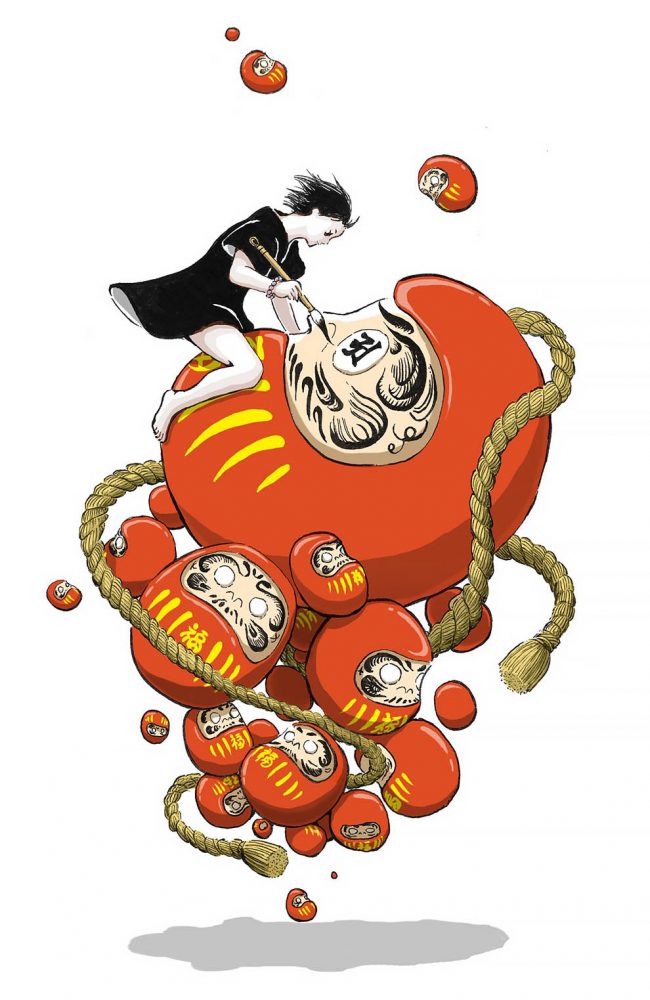



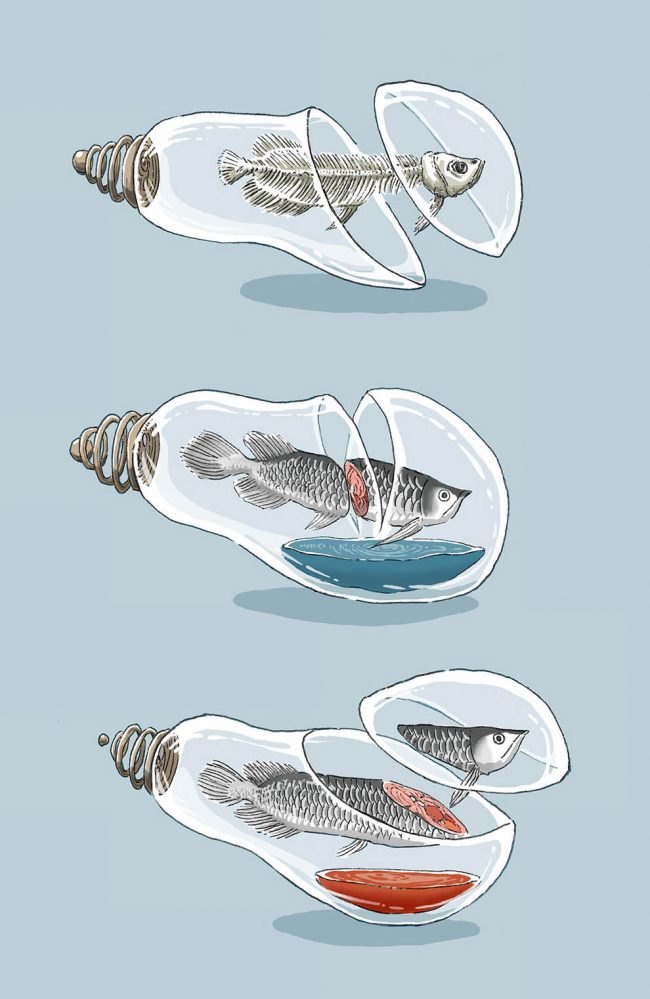
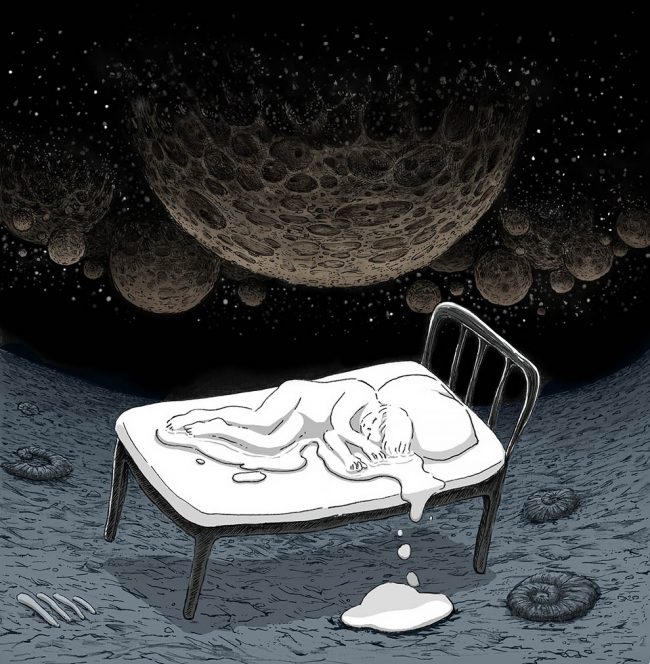













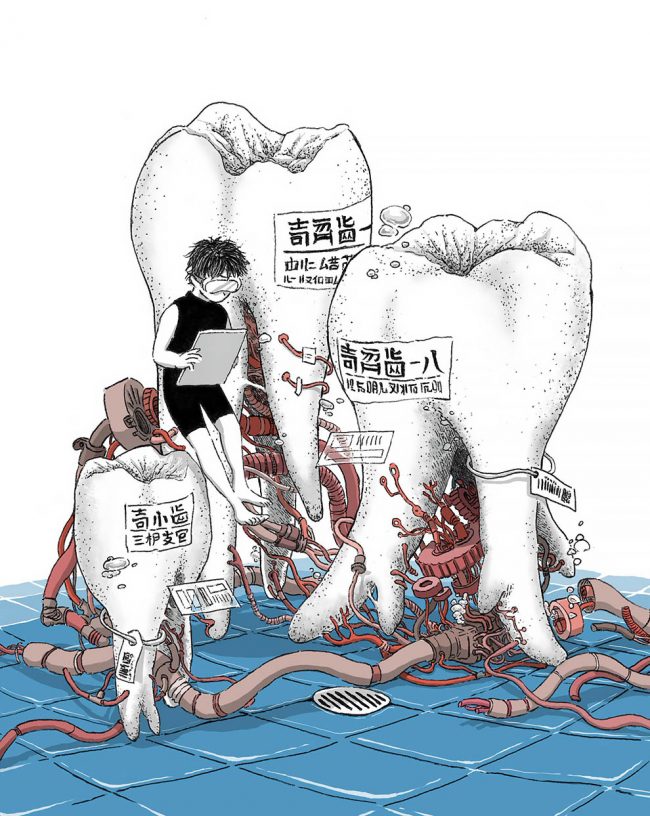







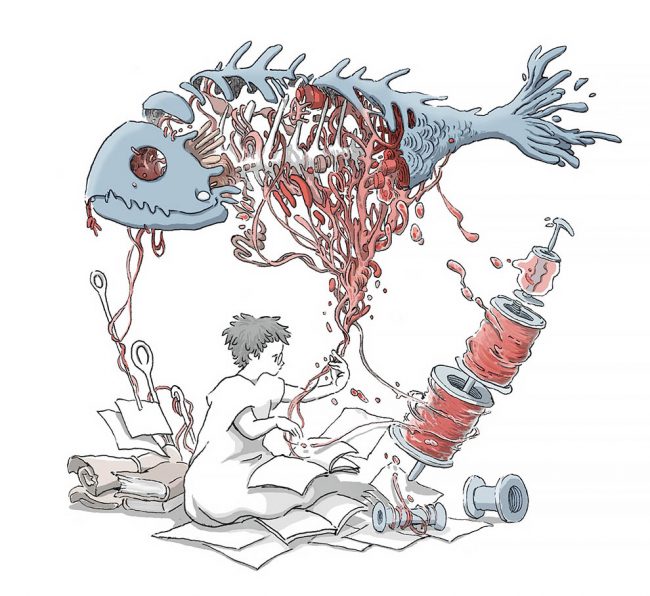
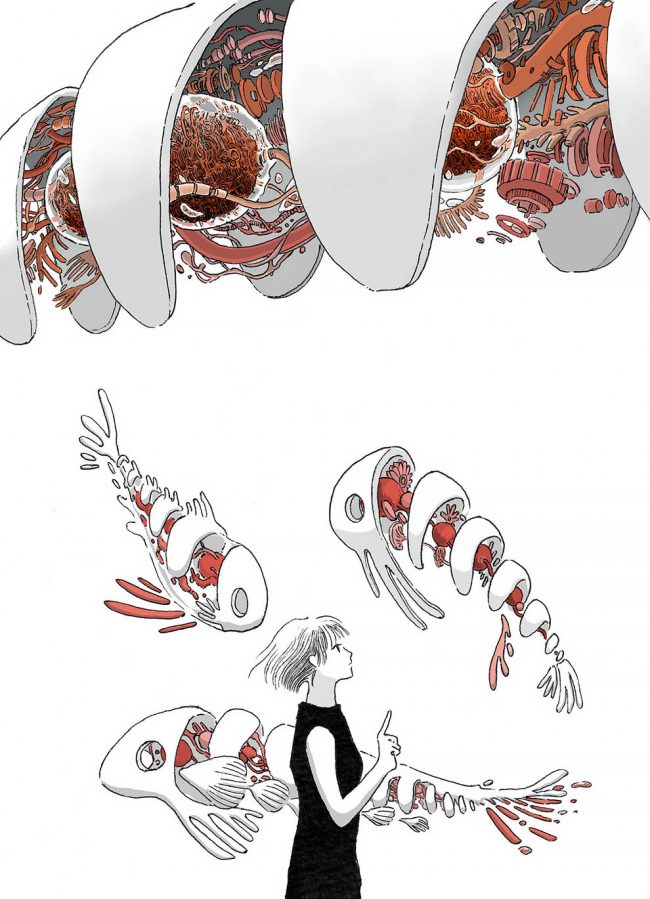



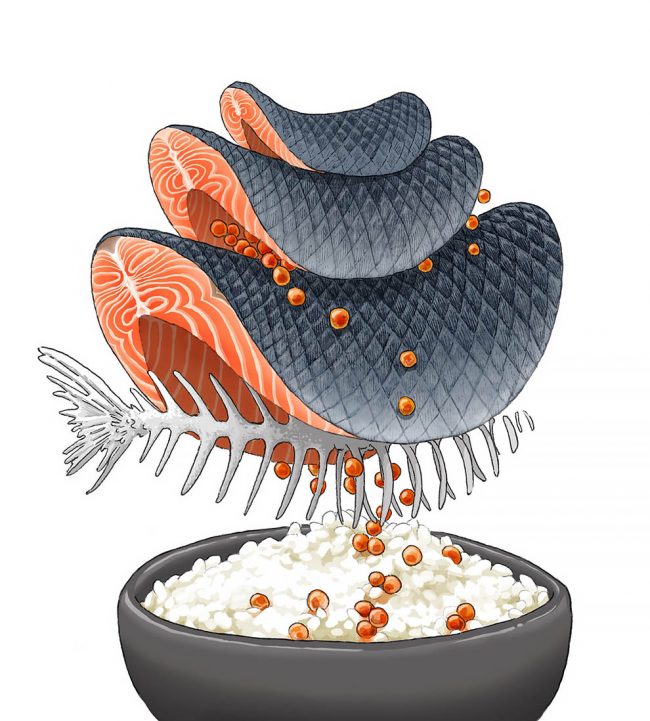

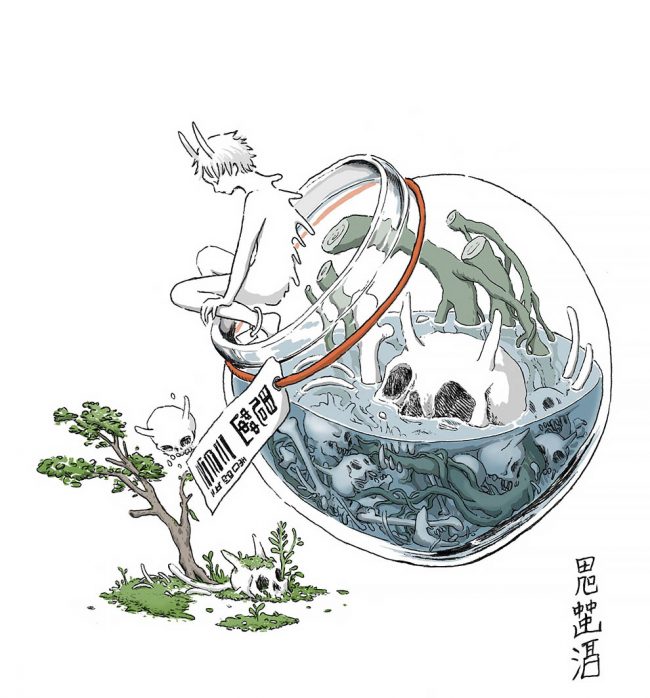




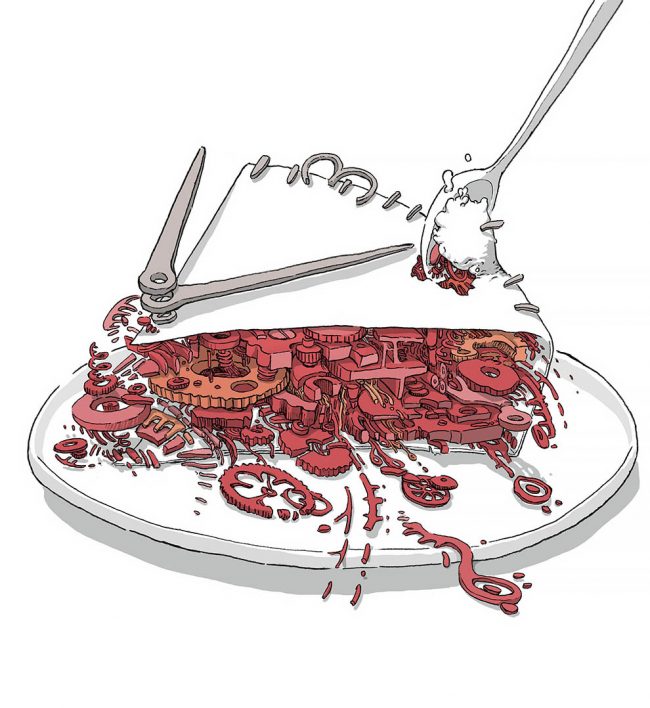

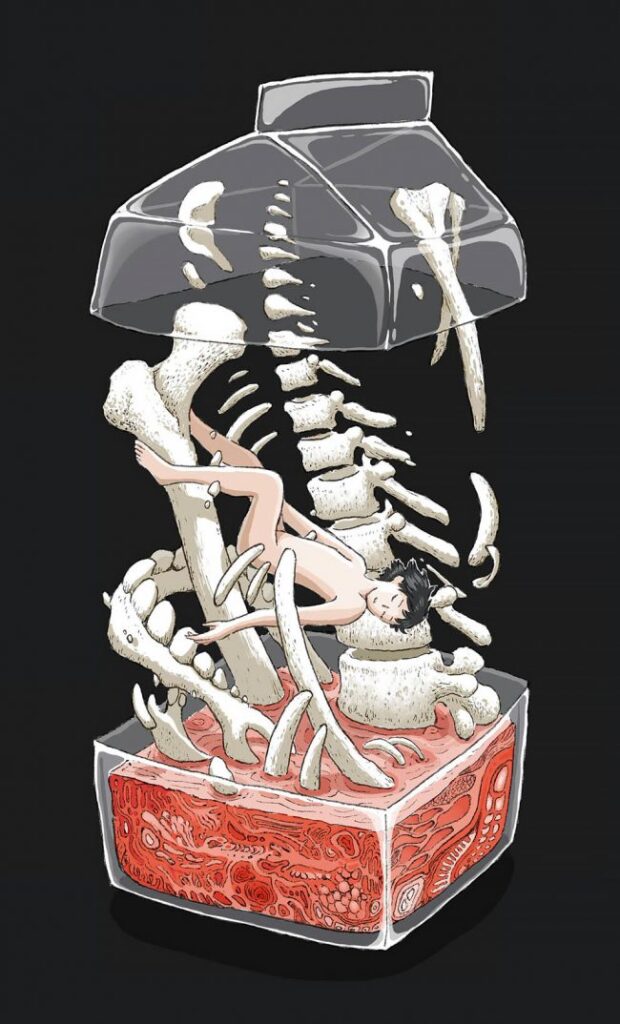








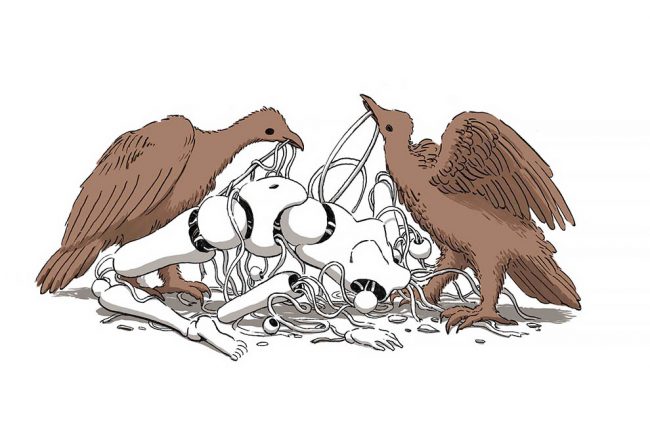

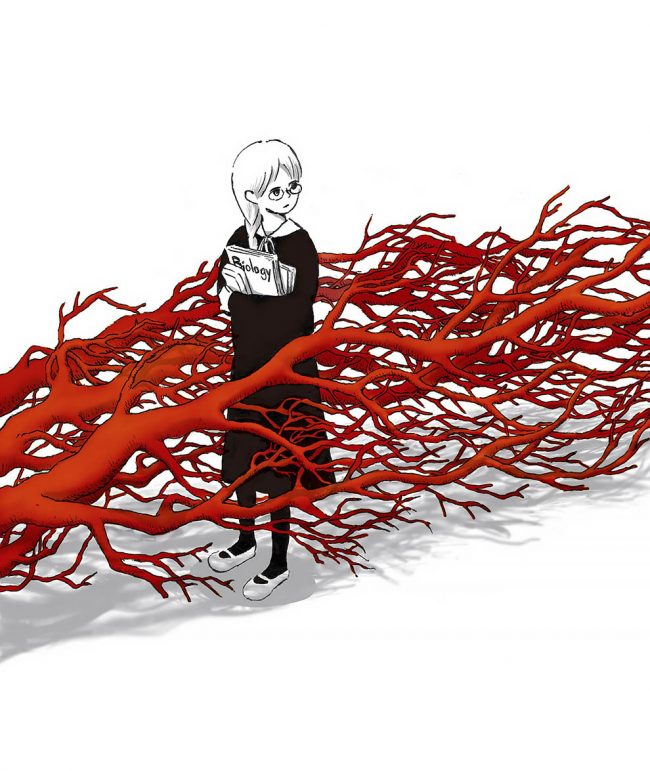







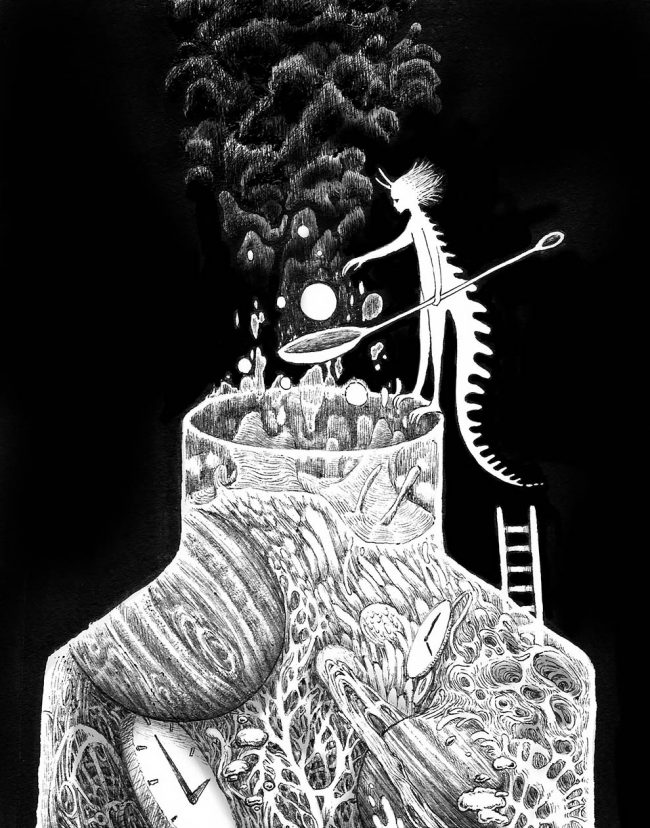









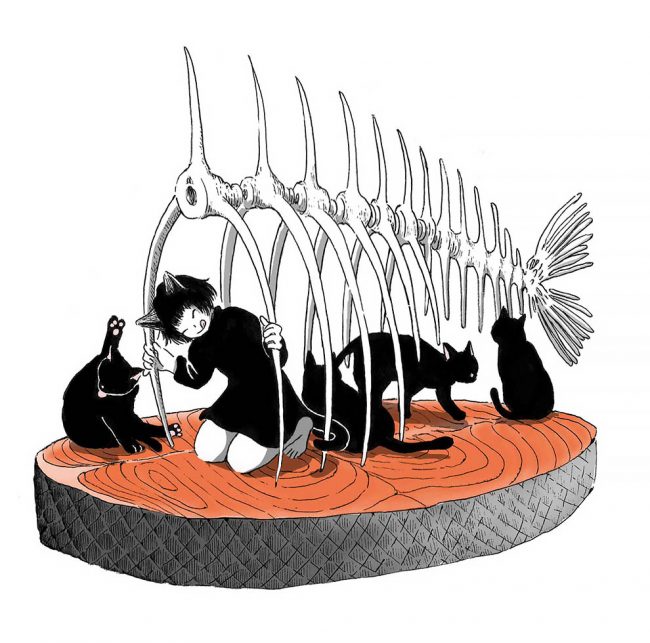





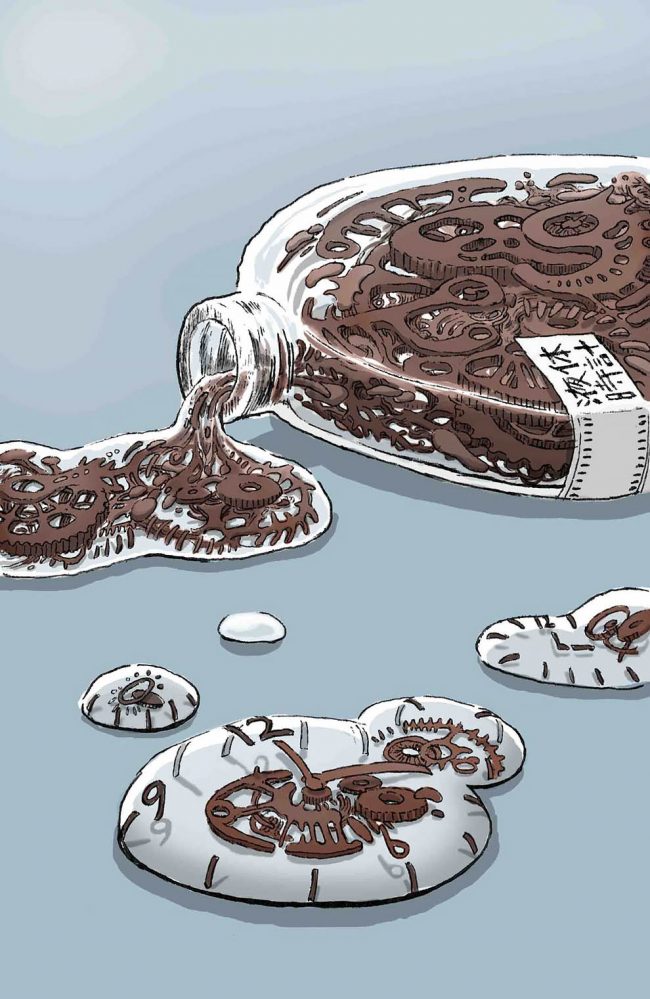


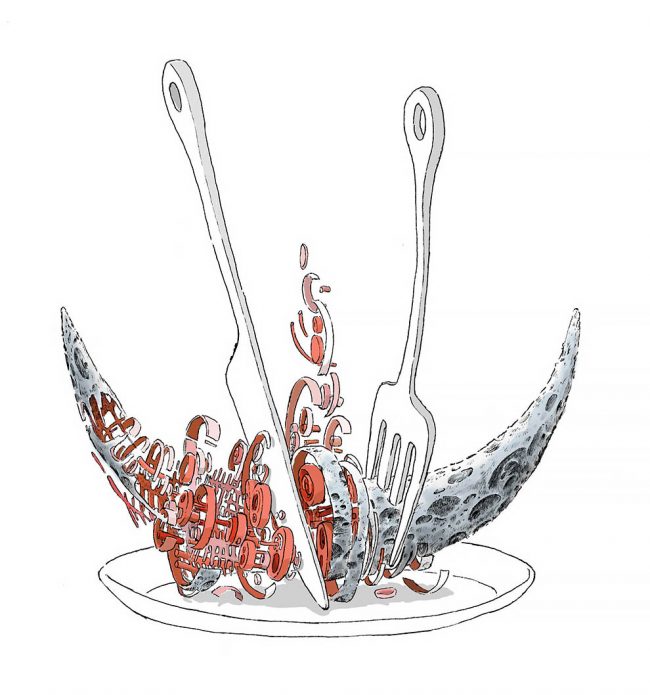


BRICS’s New Development Bank set to renew its commitment to sustainable development
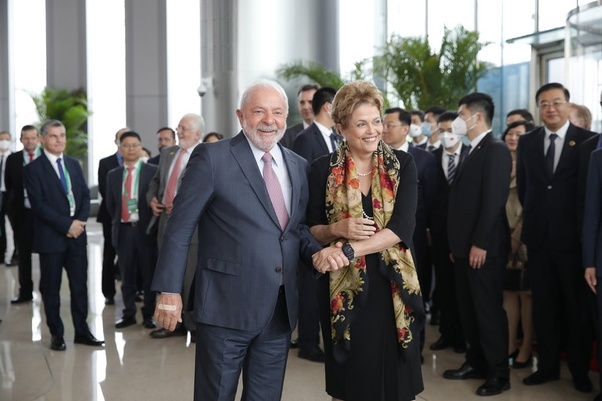
Brazilian President Luiz Inacio Lula da Silva shakes hands with the new president of the New Development Bank (NDB), Dilma Rousseff, former Brazilian President, while attending her inauguration ceremony at the bank’s headquarters in Pudong, Shanghai, east China, April 13, 2023.
Amid increasing global economic uncertainty, the New Development Bank (NDB) — under new leadership — is set to further unleash its potential to support emerging economies and developing countries, and renew its commitment to sustainable development.
The Shanghai-headquartered bank, established by Brazil, Russia, India, China and South Africa (BRICS) in 2015, is aimed at mobilizing resources for infrastructure and sustainable development projects in BRICS and other emerging economies.
Dilma Rousseff, a well-known Brazilian politician and economist, on Thursday assumed office as the president of the multilateral institution. The former president of Brazil is expected to build upon the achievements of her predecessors and write a new chapter of South-South cooperation and global sustainable development.
In an interview with Xinhua, Rousseff said investing in infrastructure development, addressing social inequality, curbing climate change and meeting sustainable development goals will be the priorities during her term of office, while emphasizing the importance of local currency for financing.
The new NDB president said the bank can make contribution to fighting climate change and meeting the sustainable development goals, for instance, by investing in alternative energy sources.
The bank’s 2022-2026 General Strategy, approved by the board of governors last year, aims to provide 30 billion U.S. dollars over the next five years. Over this period, the bank will expand operations with the private sector, multiply development impact and direct 40 percent of its approvals to climate change mitigation and adaption.
“As a former President of Brazil, I know the importance of the work of multilateral banks to support developing countries, particularly the NDB, in addressing their economic, social and environmental needs,” Rousseff said at her inauguration ceremony in Shanghai Thursday.
Brazilian President Luiz Inacio Lula da Silva, who attended Rousseff’s inauguration ceremony during a state visit to China, expressed his confidence in the bank’s promising future under the new leadership.
The bank has the qualities to become one of the largest banks for Southern countries, and has great potential in improving the situation of developing countries, Lula said.
With a seven-year-plus history, the bank has evolved from a start-up to a major provider of development solutions, with its project portfolio featuring investments in areas such as clean energy, urban mobility, water, sanitation, transport, social and digital infrastructure.
In July 2016, about one year after starting operations, the bank made its inaugural bond issuance — a green financial bond denominated in the Chinese currency renminbi (RMB) or yuan, worth of 3 billion yuan (449 million dollars). It was sold in China’s Interbank Bond Market.
Hailing the issuance as a milestone for the multilateral development bank, former NDB president K.V. Kamath said that it may help boost sustainable development and that it will support more clean and renewable energy use to reduce carbon emissions.
So far, the bank has approved 99 loan projects totaling more than 34 billion dollars, providing strong support for infrastructure construction and sustainable development of emerging markets and developing countries, Chinese Foreign Ministry Spokesperson Mao Ning said at a daily news briefing in late March.
BRICS, which is home to over 40 percent of the world’s population and accounts for about a quarter of the global economy, pursues openness, inclusiveness and win-win cooperation, as is demonstrated in its efforts to expand the NDB family.
In 2021, the bank initiated membership expansion and admitted Bangladesh, Egypt, the United Arab Emirates (UAE) and Uruguay as its new members, adding over 280 million people that can benefit from the bank’s mission and strengthening the bank’s global outreach.
Egyptian economics professor Fakhri al-Fiqi, also head of a relevant parliamentary committee, stressed that the bank is expected to become “a global financing platform,” especially for developing and emerging economies, which means that the door is open for emerging economies to join it and contribute to raising its capital.
“The New Development Bank is the product of a partnership among BRICS countries with a view to creating a world with less poverty, less inequality and more sustainability,” which is very different from the traditional banks dominated by developed countries, said Lula.
“For a long time, developing countries have had a dream to create their own investment and financing tools. The New Development Bank has realized such a dream, for it really knows what developing countries need and where they need to invest,” he said.
According to a recent report, Russia claimed to have developed an electronic warfare (EW) system that can jam satellites in geostationary orbit at an altitude of 36,000 kilometers.

“Enterprises of the Russian military-industrial complex have developed a new electronic warfare system capable of suppressing satellites in geostationary orbit with its signal. This is about 36,000 km above sea level,”
Without divulging any further details, the source added that at a shorter distance, the power of the emitter of the new system is capable of irreparable harm to the enemy’s electronics.
The revelation of the new Russian EW system came on the “Day of the Specialist in Electronic Warfare,” which is celebrated in Russian annually on April 15 to mark the occasion of the first combat use of electronic warfare on April 15, 1904, during the Russo-Japanese War (1904-1905), when Russian radio stations interfered with Japanese radio operators during the defense of Port Arthur.
Russia demonstrated its anti-satellite capabilities in November 2021 by carrying out a direct ascent anti-satellite (ASAT) test in which it destroyed one of its satellites that had been in orbit since 1982.
The anti-satellite test showed Russia was “ready to deny us space capabilities to other players, even if it creates some debris,” said Major General Michel Friedling, head of France’s Space Command, in June last year. “And even if it denies, to [Russia, themselves] the use of space capabilities,” he continued.
Thereafter, in the weeks preceding Russia’s invasion of Ukraine, it launched a cyber-attack on a US-based communications company, Viasat, to cripple Ukrainian command and control, which relied on Viasat’s satellite terminal up to some extent.
The cyber-attack was very effective, as was acknowledged by the senior Ukrainian cybersecurity official, Victor Zhora, who said it caused “a huge loss in communications at the very beginning of the war.”
However, the fallout of this successful cyber-attack was wide-reaching, as thousands of internet users across Europe were also thrown offline. For example, in France, according to Orange, a French Telecom company, 9,000 subscribers of a satellite internet service provided by its subsidiary, Nordnet, were left without internet.
Similarly, around one-third of 40,000 subscribers of bigblu satellite internet service based in Germany, France, Hungary, Greece, Italy, and Poland, were affected by the attacks on the Viasat satellite network.
The outages also knocked offline nearly 5,800 wind turbines in Germany and Central Europe, with a combined output of 11 gigawatts.
So, overall, Russia already has formidable kinetic as well as non-kinetic anti-satellite capabilities, and the recent news about the development of an EW complex for jamming satellites can be considered a move toward further bolstering those capabilities.
Are Russian Claims True?
For this, Colonel Konstantinos Zikidis of the Hellenic Air Force (HAF), formerly a Deputy Commander at the HAF Telecomms and Electronics Depot (ETHM), to assess the viability of Russian claims, was consulted.
“In general, the term ‘electronic warfare’ encompasses support, protection, and attack, focused mainly on radar and IR systems. A satellite in geostationary orbit has an altitude of 35,786 kilometers, traveling at an orbital speed of 3.07 kilometers per second, although it seems stationary, as seen from Earth.
At such distances, using RF noise jamming or any High Power Microwave weapon would be meaningless,” Zikidis believes.
The only potential solution for attacking a GEO satellite, according to Zikidis, would be a directed-energy weapon in the form of a very high-energy laser.
“Right now, High Energy Laser (HEL) systems featuring an output power at the order of hundreds of kiloWatts have been tested, at least according to open sources, with megaWatt class systems expected in the near future,” he noted, citing reports of US HEL programs.
He also cited an academic paper written by experts from China’s HeFei University and the People’s Liberation Army (PLA), which mentions a US Army ground-based laser weapon system capable of reaching 10 MegaWatt (MW) and the power of airborne lasers (ABL) reaching MW.
The same paper also talks about Russian plans to develop a laser with a range of 40,000 kilometers to attack early warning satellites, noted Zikidis while cautioning against discarding Russian claims.
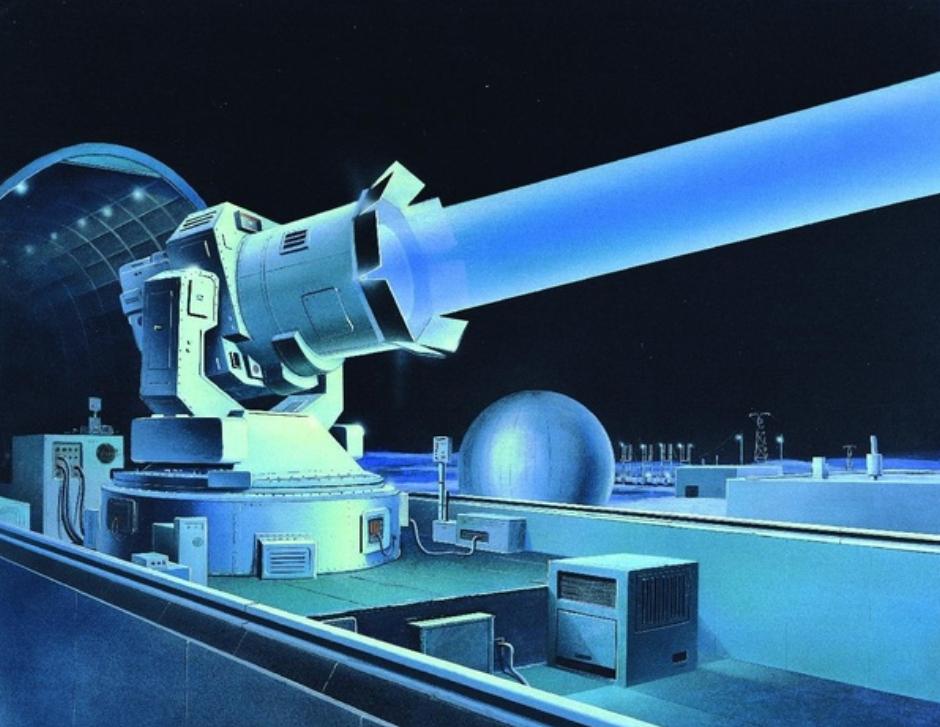
When asked about what impact such a HEL system would have, Zikidis explained that it would be rather difficult to estimate its possible effect against a GEO satellite as there are limitations to the performance of a laser system.
“Inside atmospheric conditions, the laser beam suffers from absorption and scattering, while there are some upper limits to the power density of the beam. On the other hand, he said that using a ground-based HEL system against a stationary target would have the benefit of time, allowing for a cumulative effect.
If Chinese food is bad, why aren’t most humans in China morbidly obese?
Ah
Chinese Food that the rest of the world knows is NOT the Food that Chinese eat
Egg Rolls, Foo Yung, General Tsos Chicken etc is what is available in all these Chinese Restaurants in US while Chowmein, Egg Rolls, Fried Rice, Hakka Noodles, Chilly Chicken is what we associate with Chinese Food in India.
In Reality Chinese Food is a Lot of Vegetables stewed and boiled and cooked with sauces, Very Small helpings of Pork and Fish , a Lot of Tofu, Rice, A Soup

This is more or less the Noodles Chinese Consume.
The Noodles have mainly soup and vegetables and fish balls and tofu (soy) and sauces

These are Noodles that sell in Commercial outlets as Chinese Foods
Heavier Rice Noodles, Lots of Oil, Shrimp, Chicken, Onions, MSG (Aginomoto)
This is not what the Chinese eat every day even though its branded as Chinese food.
So thats why Chinese arent morbidly obese
They eat primarily steamed or boiled or lightly grilled or stir fried foods primarily containing Rice, Tofu and Greens and Mushrooms with Pork and Seafood
All healthy foods high on protein and lower in Carbs and definitely lower in fats
AND POTATOES? THEY ARE NON EXISTENT IN CHINESE CUISINE YET CHILLY HONEY POTATOES WAS ZOMATOS #1 SELLING CHINESE SIDE DISH AMONG VEGETARIANS
MAJOR TRAIN DERAILMENT – WISCONSIN – HAZ MAT INTO MISSISSIPPI RIVER
A major train derailment has taken place in Ferryville, Wisconsin, that sent numerous train cars plummeting into the waters of the Mississippi River. If the Haz Mat releases, it could pollute the ENTIRE River for its full length inside the USA.
Emergency crews, including Hazmat teams, have responded to the derailment in Ferryville, Wisconsin.
Four people have been injured and multiple train cars have fallen into the Mississippi River.
It is currently unknown what’s inside the cars but reports are saying there might be a paint and lithium batteries in some of the train cars.
All local sand/gravel trucks are being sent in to help.
This area has suffered record setting Mississippi river floods recently, which are ONGOING.
According to locals, the rails washed out in front of the train which then derailed and dumped into the river.
Two rail cars washed down stream.
A local spokesman said lithium cars didn’t tip into the river — yet.
At this time of year, the river is usually at 8′, but now it is at almost 25′.
Bloomberg has an article on the growing unpopularity of the US:
Former Treasury Secretary Lawrence Summers warned of “troubling” signs that the US is losing global influence as other powers align together and win favor among nations not yet aligned. . . .
“Somebody from a developing country said to me, ‘what we get from China is an airport. What we get from the United States is a lecture,’” said Summers, a Harvard University professor and paid contributor to Bloomberg TV.
Obviously, lecturing other countries is not the best way to win friends and influence people. Better to lead by example. But it’s actually far worse than Summers suggests.
Over the past 4 decades, many if not most of our “lectures” have been US officials arrogantly telling less developed nations (and even developed places) that they needed to follow the “Washington Consensus”. You remember the Washington Consensus, the idea that countries should refrain from protectionism and industrial policies.
Now the US has abandoned the Washington Consensus and decided to go all in with protectionism and industrial policy. And that’s because we supposedly need to do this to keep from falling behind. But weren’t we told that these policies slow economic development?
It’s annoying when you get lectured to by more successful countries. It’s especially annoying then the lecture comes from self righteous societies that don’t follow their own advice. Is it any wonder that developing countries have lost respect for the US government.
I have too.
US officials scramble to slow China’s advances
The US is bidding to build a chip ban alliance against China. Image: Twitter
.
State of decay across the UK
The Rise of China (and the Fall of the U.S.?)
By Alfred McCoy, a historian and educator. He is the Fred Harvey Harrington Professor of History at the University of Wisconsin–Madison and author of To Govern the Globe: World Orders and Catastrophic Change. Originally published at TomDispatch.
From the ashes of a world war that killed 80 million people and reduced great cities to smoking rubble, America rose like a Titan of Greek legend, unharmed and armed with extraordinary military and economic power, to govern the globe.
During four years of combat against the Axis leaders in Berlin and Tokyo that raged across the planet, America’s wartime commanders — George Marshall in Washington, Dwight D. Eisenhower in Europe, and Chester Nimitz in the Pacific — knew that their main strategic objective was to gain control over the vast Eurasian landmass.
Whether you’re talking about desert warfare in North Africa, the D-Day landing at Normandy, bloody battles on the Burma-India border, or the island-hopping campaign across the Pacific, the Allied strategy in World War II involved constricting the reach of the Axis powers globally and then wresting that very continent from their grasp.
That past, though seemingly distant, is still shaping the world we live in.
Those legendary generals and admirals are, of course, long gone, but the geopolitics they practiced at such a cost still has profound implications. For just as Washington encircled Eurasia to win a great war and global hegemony, so Beijing is now involved in a far less militarized reprise of that reach for global power.
And to be blunt, these days, China’s gain is America’s loss.
Every step Beijing takes to consolidate its control over Eurasia simultaneously weakens Washington’s presence on that strategic continent and so erodes its once formidable global power.
A Cold War Strategy
After four embattled years imbibing lessons about geopolitics with their morning coffee and bourbon nightcaps, America’s wartime generation of generals and admirals understood, intuitively, how to respond to the future alliance of the two great communist powers in Moscow and Beijing.
In 1948, following his move from the Pentagon to Foggy Bottom, Secretary of State George Marshall launched the $13 billion Marshall Plan to rebuild a war-torn Western Europe, laying the economic foundations for the formation of the NATO alliance just a year later.
After a similar move from the wartime Allied headquarters in London to the White House in 1953, President Dwight D. Eisenhower helped complete a chain of military bastions along Eurasia’s Pacific littoral by signing a series of mutual-security pacts — with South Korea in 1953, Taiwan in 1954, and Japan in 1960. For the next 70 years, that island chain would serve as the strategic hinge on Washington’s global power, critical for both the defense of North America and dominance over Eurasia.
After fighting to conquer much of that vast continent during World War II, America’s postwar leaders certainly knew how to defend their gains. For more than 40 years, their unrelenting efforts to dominate Eurasia assured Washington of an upper hand and, in the end, victory over the Soviet Union in the Cold War. To constrain the communist powers inside that continent, the U.S. ringed its 6,000 miles with 800 military bases, thousands of jet fighters, and three massive naval armadas — the 6th Fleet in the Atlantic, the 7th Fleet in the Indian Ocean and the Pacific, and, somewhat later, the 5th Fleet in the Persian Gulf.
Thanks to diplomat George Kennan, that strategy gained the name “containment” and, with it, Washington could, in effect, sit back and wait while the Sino-Soviet bloc imploded through diplomatic blunder and military misadventure. After the Beijing-Moscow split of 1962 and China’s subsequent collapse into the chaos of Mao Zedong’s Cultural Revolution, the Soviet Union tried repeatedly, if unsuccessfully, to break out of its geopolitical isolation — in the Congo, Cuba, Laos, Egypt, Ethiopia, Angola, and Afghanistan. In the last and most disastrous of those interventions, which Soviet leader Mikhail Gorbachev came to term “the bleeding wound,” the Red Army deployed 110,000 soldiers for nine years of brutal Afghan combat, hemorrhaging money and manpower in ways that would contribute to the collapse of the Soviet Union in 1991.
In that heady moment of seeming victory as the sole superpower left on planet Earth, a younger generation of Washington foreign-policy leaders, trained not on battlefields but in think tanks, took little more than a decade to let that unprecedented global power start to slip away. Toward the close of the Cold War era in 1989, Francis Fukuyama, an academic working in the State Department’s policy planning unit, won instant fame among Washington insiders with his seductive phrase “the end of history.” He argued that America’s liberal world order would soon sweep up all of humanity on an endless tide of capitalist democracy. As he put it in a much-cited essay: “The triumph of the West, of the Western idea, is evident… in the total exhaustion of viable systemic alternatives to Western liberalism… seen also in the ineluctable spread of consumerist Western culture.”
The Invisible Power of Geopolitics
Amid such triumphalist rhetoric, Zbigniew Brzezinski, another academic sobered by more worldly experience, reflected on what he had learned about geopolitics during the Cold War as an adviser to two presidents, Jimmy Carter and Ronald Reagan. In his 1997 book The Grand Chessboard, Brzezinski offered the first serious American study of geopolitics in more than half a century. In the process, he warned that the depth of U.S. global hegemony, even at this peak of unipolar power, was inherently “shallow.”
For the United States and, he added, every major power of the past 500 years, Eurasia, home to 75% of the world’s population and productivity, was always “the chief geopolitical prize.” To perpetuate its “preponderance on the Eurasian continent” and so preserve its global power, Washington would, he warned, have to counter three threats: “the expulsion of America from its offshore bases” along the Pacific littoral; ejection from its “perch on the western periphery” of the continent provided by NATO; and finally, the formation of “an assertive single entity” in the sprawling center of Eurasia.
Arguing for Eurasia’s continued post-Cold War centrality, Brzezinski drew heavily on the work of a long-forgotten British academic, Sir Halford Mackinder. In a 1904 essay that sparked the modern study of geopolitics, Mackinder observed that, for the past 500 years, European imperial powers had dominated Eurasia from the sea, but the construction of trans-continental railroads was shifting the locus of control to its vast interior “heartland.” In 1919, in the wake of World War I, he also argued that Eurasia, along with Africa, formed a massive “world island” and offered this bold geopolitical formula: “Who rules the Heartland commands the World Island; Who rules the World Island commands the World.” Clearly, Mackinder was about 100 years premature in his predictions.
But today, by combining Mackinder’s geopolitical theory with Brzezinski’s gloss on global politics, it’s possible to discern, in the confusion of this moment, some potential long-term trends. Imagine Mackinder-style geopolitics as a deep substrate that shapes more ephemeral political events, much the way the slow grinding of the planet’s tectonic plates becomes visible when volcanic eruptions break through the earth’s surface. Now, let’s try to imagine what all this means in terms of international geopolitics today.
China’s Geopolitical Gambit
In the decades since the Cold War’s close, China’s increasing control over Eurasia clearly represents a fundamental change in that continent’s geopolitics. Convinced that Beijing would play the global game by U.S. rules, Washington’s foreign policy establishment made a major strategic miscalculation in 2001 by admitting it to the World Trade Organization (WTO). “Across the ideological spectrum, we in the U.S. foreign policy community,” confessed two former members of the Obama administration, “shared the underlying belief that U.S. power and hegemony could readily mold China to the United States’ liking… All sides of the policy debate erred.” In little more than a decade after it joined the WTO, Beijing’s annual exports to the U.S. grew nearly five-fold and its foreign currency reserves soared from just $200 billion to an unprecedented $4 trillion by 2013.
In 2013, drawing on those vast cash reserves, China’s new president, Xi Jinping, launched a trillion-dollar infrastructure initiative to transform Eurasia into a unified market. As a steel grid of rails and petroleum pipelines began crisscrossing the continent, China ringed the tri-continental world island with a chain of 40 commercial ports — from Sri Lanka in the Indian Ocean, around Africa’s coast, to Europe from Piraeus, Greece, to Hamburg, Germany. In launching what soon became history’s largest development project, 10 times the size of the Marshall Plan, Xi is consolidating Beijing’s geopolitical dominance over Eurasia, while fulfilling Brzezinski’s fear of the rise of “an assertive single entity” in Central Asia.
Unlike the U.S., China hasn’t spent significant effort establishing military bases. While Washington still maintains some 750 of them in 80 nations, Beijing has just one military base in Djibouti on the east African coast, a signals intercept post on Myanmar’s Coco Islands in the Bay of Bengal, a compact installation in eastern Tajikistan, and half a dozen small outposts in the South China Sea.
Moreover, while Beijing was focused on building Eurasian infrastructure, Washington was fighting two disastrous wars in Afghanistan and Iraq in a strategically inept bid to dominate the Middle East and its oil reserves (just as the world was beginning to transition away from petroleum to renewable energy). In contrast, Beijing has concentrated on the slow, stealthy accretion of investments and influence across Eurasia from the South China Sea to the North Sea. By changing the continent’s underlying geopolitics through this commercial integration, it’s winning a level of control not seen in the last thousand years, while unleashing powerful forces for political change.
Tectonic Shifts Shake U.S. Power
After a decade of Beijing’s relentless economic expansion across Eurasia, the tectonic shifts in that continent’s geopolitical substrate have begun to manifest themselves in a series of diplomatic eruptions, each erasing another aspect of U.S. influence. Four of the more recent ones might seem, at first glance, unrelated but are all driven by the relentless force of geopolitical change.
First came the sudden, unexpected collapse of the U.S. position in Afghanistan, forcing Washington to end its 20-year occupation in August 2021 with a humiliating withdrawal. In a slow, stealthy geopolitical squeeze play, Beijing had signed massive development deals with all the surrounding Central Asian nations, leaving American troops isolated there. To provide critical air support for its infantry, U.S. jet fighters were often forced to fly 2,000 miles from their nearest base in the Persian Gulf — an unsustainable long-term situation and unsafe for troops on the ground. As the U.S.-trained Afghan Army collapsed and Taliban guerrillas drove into Kabul atop captured Humvees, the chaotic U.S. retreat in defeat became unavoidable.
Just six months later in February 2022, President Vladimir Putin massed an armada of armored vehicles loaded with 200,000 troops on Ukraine’s border. If Putin is to be believed, his “special military operation” was to be a bid to undermine NATO’s influence and weaken the Western alliance — one of Brzezinski’s conditions for the U.S. eviction from Eurasia.
But first Putin visited Beijing to court President Xi’s support, a seemingly tall order given China’s decades of lucrative trade with the United States, worth a mind-boggling $500 billion in 2021. Yet Putin scored a joint declaration that the two nations’ relations were “superior to political and military alliances of the Cold War era” and a denunciation of “the further expansion of NATO.”
As it happened, Putin did so at a perilous price. Instead of attacking Ukraine in frozen February when his tanks could have maneuvered off-road on their way to the Ukrainian capital Kyiv, he had to wait out Beijing’s Winter Olympics. So, Russian troops invaded instead in muddy March, leaving his armored vehicles stuck in a 40-mile traffic jam on a single highway where the Ukrainians readily destroyed more than 1,000 tanks. Facing diplomatic isolation and European trade embargos as his defeated invasion degenerated into a set of vengeful massacres, Moscow shifted much of its exports to China. That quickly raised bilateral trade by 30% to an all-time high, while reducing Russia to but another piece on Beijing’s geopolitical chessboard.
Then, just last month, Washington found itself diplomatically marginalized by an utterly unexpected resolution of the sectarian divide that had long defined the politics of the Middle East. After signing a $400-billion infrastructure deal with Iran and making Saudi Arabia its top oil supplier, Beijing was well positioned to broker a major diplomatic rapprochement between those bitter regional rivals, Shia Iran and Sunni Saudi Arabia. Within weeks, the foreign ministers of the two nations sealed the deal with a deeply symbolic voyage to Beijing — a bittersweet reminder of the days not long ago when Arab diplomats paid court in Washington.
Finally, the Biden administration was stunned this month when Europe’s preeminent leader, Emmanuel Macron of France, visited Beijing for a series of intimate tête-à-tête chats with China’s President Xi. At the close of that extraordinary journey, which won French companies billions in lucrative contracts, Macron announced “a global strategic partnership with China” and promised he would not “take our cue from the U.S. agenda” over Taiwan. A spokesman for the Élysée Palace quickly released a pro forma clarification that “the United States is our ally, with shared values.” Even so, Macron’s Beijing declaration reflected both his own long-term vision of the European Union as an independent strategic player and that bloc’s ever-closer economic ties to China
The Future of Geopolitical Power
Projecting such political trends a decade into the future, Taiwan’s fate would seem, at best, uncertain. Instead of the “shock and awe” of aerial bombardments, Washington’s default mode of diplomatic discourse in this century, Beijing prefers stealthy, sedulous geopolitical pressure. In building its island bases in the South China Sea, for example, it inched forward incrementally — first dredging, then building structures, next runways, and finally emplacing anti-aircraft missiles — in the process avoiding any confrontation over its functional capture of an entire sea.
Lest we forget, Beijing has built its formidable economic-political-military power in little more than a decade. If its strength continues to increase inside Eurasia’s geopolitical substrate at even a fraction of that head-spinning pace for another decade, it may be able to execute a deft geopolitical squeeze-play on Taiwan like the one that drove the U.S. out of Afghanistan. Whether from a customs embargo, incessant naval patrols, or some other form of pressure, Taiwan might just fall quietly into Beijing’s grasp.
Should such a geopolitical gambit prevail, the U.S. strategic frontier along the Pacific littoral would be broken, possibly pushing its Navy back to a “second island chain” from Japan to Guam — the last of Brzezinski’s criteria for the true waning of U.S. global power. In that event, Washington’s leaders could once again find themselves sitting on the proverbial diplomatic and economic sidelines, wondering how it all happened.



